2025 September 25-26-27 The annual Triple Tree Fly-In
2025 June 15 S.C. Breakfast Club at Greenwood Airport
2025 April 27 S.C. Breakfast Club at Broxton Bridge Plantation
2024 December 26 Surreal Skies over Roanoke, Virginia
2021 October 1 Helicopter Flight!
2019 July 12 Sunrise, from two miles above Illinois
2019 July 1 The Smoky Mountains
2017 October 21
Dew Tracks at Triple Tree ... and
first flight in a glider
2006 January 1 Sunrise, New Year's Day, 2006
Flying in South Carolina
South Carolina offers the best flying in the world. The cost of flying is much lower than in more metropolitan areas of the U.S., which makes flying much more affordable. With weather moderated by the impacts of the Smokies and the Gulf Stream weather currents, flying is great year-round.
The state is relatively flat, and flights to the beaches or the mountains are much faster than by car. Similarly, flights to Atlanta for shopping are not only faster, but avoid dealng with highways full of traffic. The theme parks in Orlando are only a few hours away. Most of the U.S. this side of the Rockies is within less than a day's flight.
South Carolina also has something no other state can offer: the South Carolina Breakfast Club. Formed in 1938, the SCBC meets every other weekend, somewhere in the state, except for one breakfast in Salisbury, NC, each year. In good weather, forty to fifty airplanes typically make a landing. Show up once, and you are a life-time member; no dues, no by-laws. If you make a bad landing, you might get to sign the ball or maybe for any excuse at all. "It's all done in fun." Breakfast is served about 9:00; take off by 11:00.
The SCBC schedule for 2026:
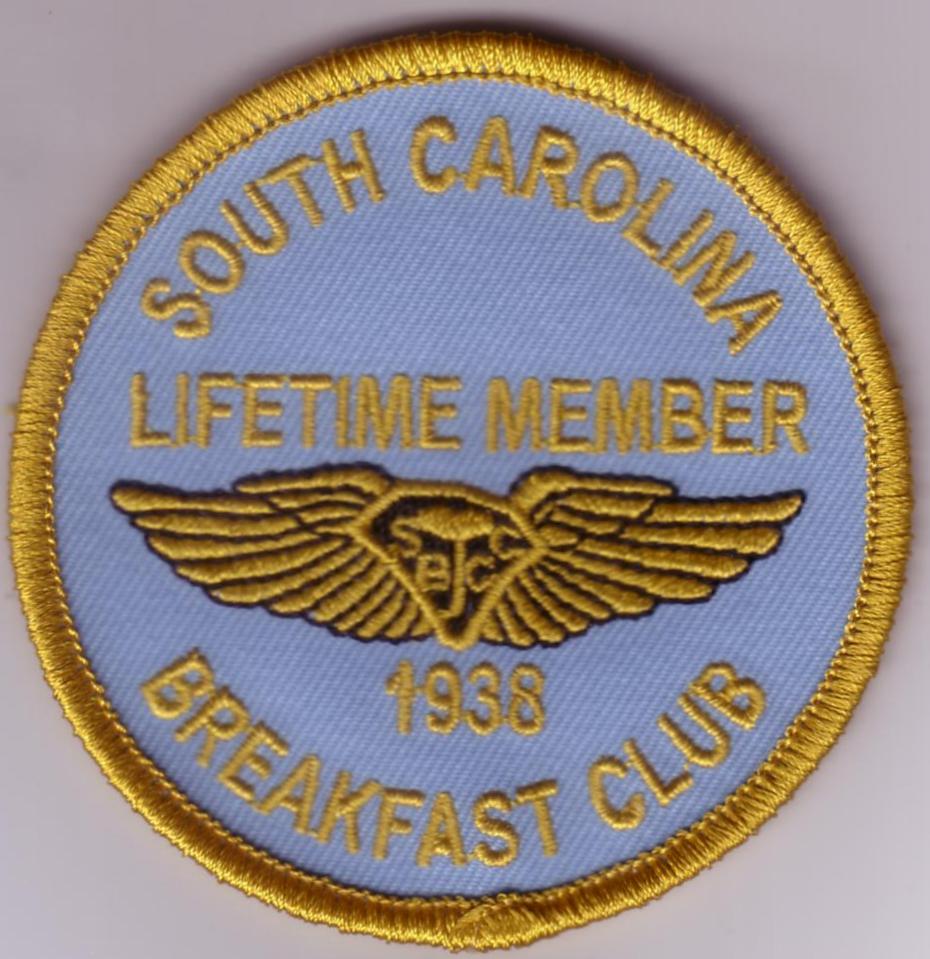
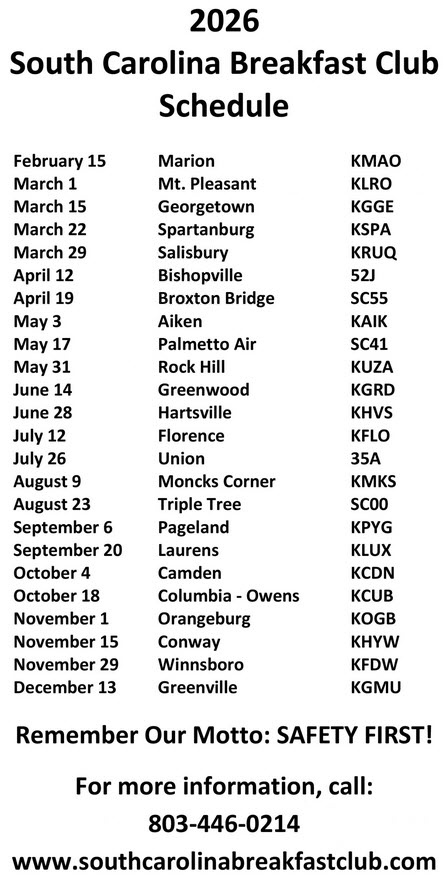
Be sure not to miss:
* the
fly-in videos from each SCBC breakfast ,
* In Memoriam for Gerald Ballard, SCBC President from 1979 to 2017,
* an AOPA article on the Breakfast Club.
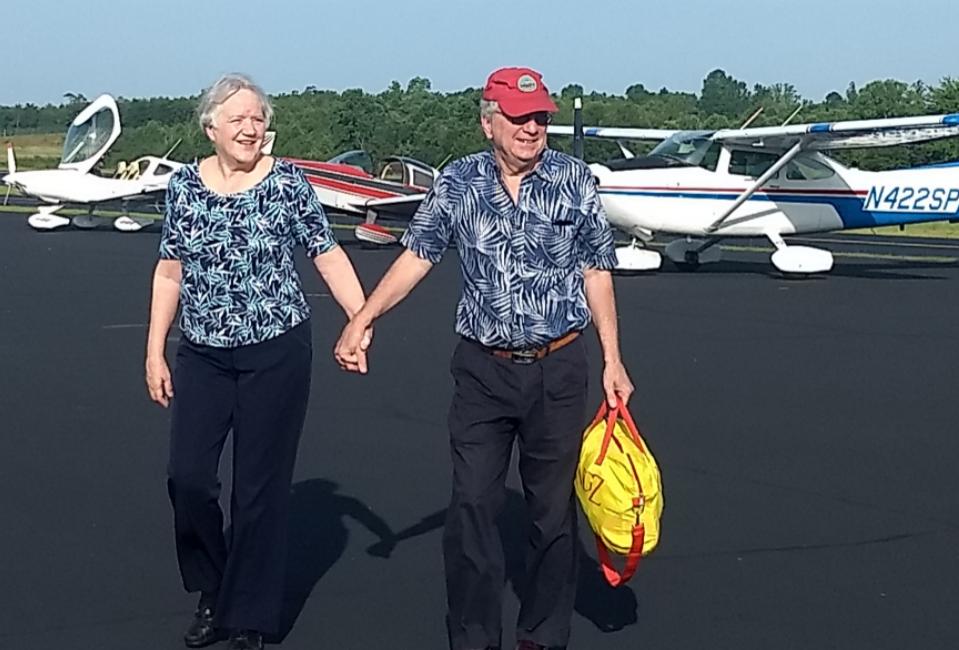
Be sure to check out the FAA's Online Resources for Pilots
More questions about flying? Send them here.
As the South Carolina Breakfast Club Vice President, I would like to welcome you to the great flying here in South Carolina.
Between the SCBC fly-ins and the airports where you can get your "hundred-dollar hamburgers", there is always someplace to fly to, making it easy to say, "Let's go fly!", and keep your flying skills current between those more occasional flights to distant places.

Upstate South Carolina has something else that is quickly growing to be in the same league with Oshkosh and Lakeland Fun-in-Sun:
the Triple Tree Aerodrome, near Woodruff. This 7,000 foot runway is the home of an annual fly-in, an SCBC fly-in, and much more.
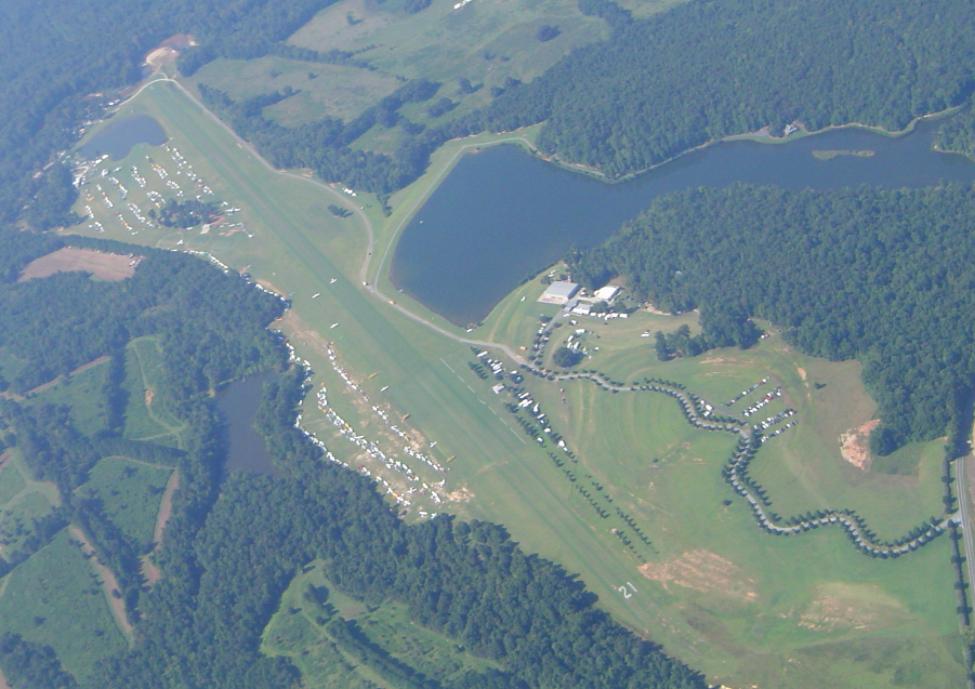
Social Flight
Angel Flight
-
Missions
Join the South Carolina Aviation Association to stay aware of scheduled events and aviation news in South Carolina.
See the South Carolina Aviation Association's Autumn 2020 Newsletter
Palmetto Aviation
newsletter.
Upstate Aviation Club
Meets monthly, except June, July, and August every second Tuesday at 6:00 p.m. at the Runway Cafe, GMU South Ramp; dinner at 6:30
Each meeting features a guest speaker, except social meeting in December.
Tracking the International Space Station
and the
ISS Earth cam
Just a few miles into North Carolina, at the Hickory Airport (HKY) is the Crosswind Cafe, a great place to go for lunch.
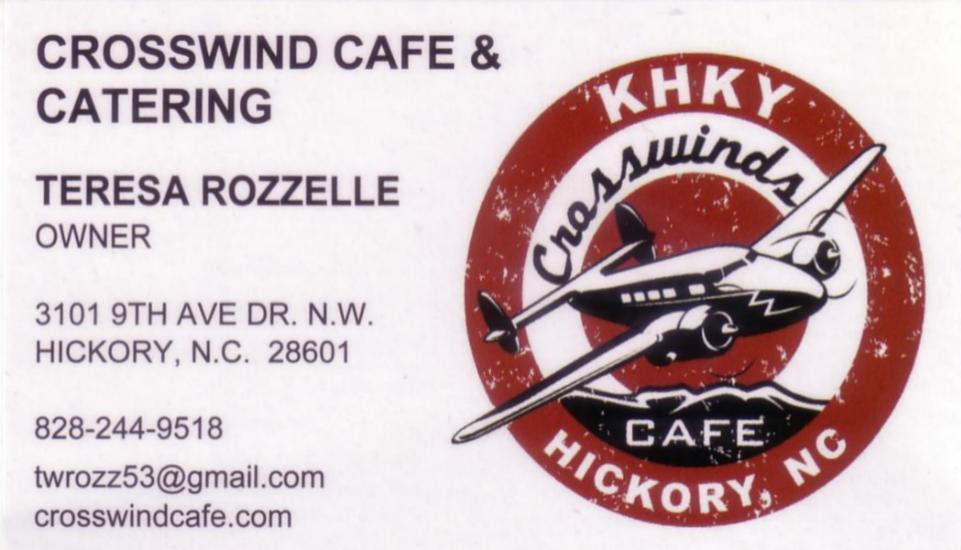
While you are there, don't miss the chance to visit the Hickory Aviation Museum!
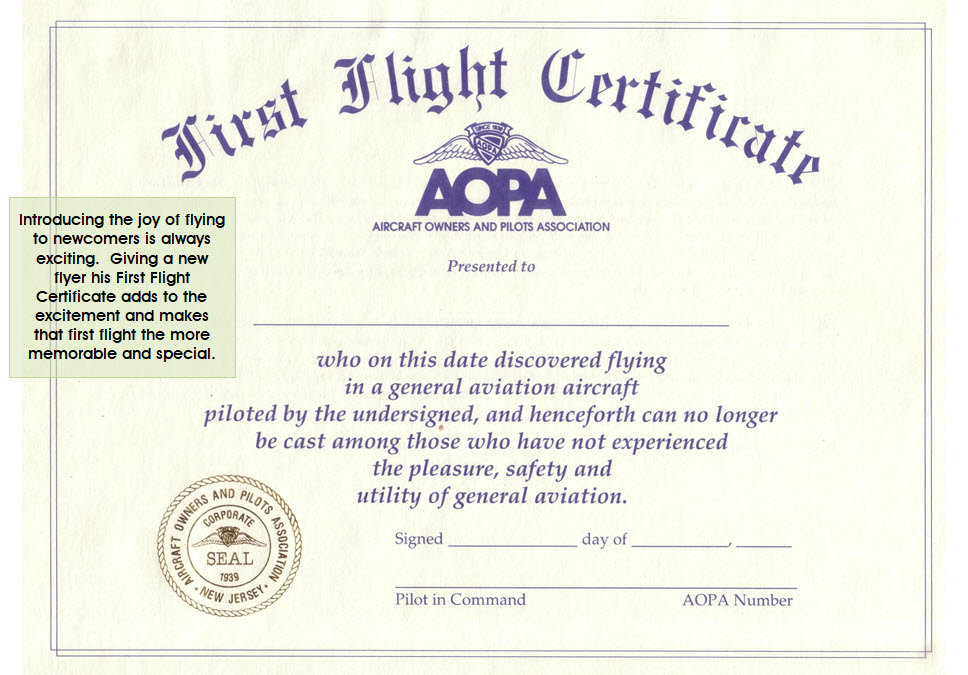
One great way to get people interested in flying is to auction off airplane rides for a charity. Each year the company where I worked before retiring held a silent auction for items people contribute, with the proceeds going to United Way. For several years, I contributed two flights, for a co-worker and up to two family members.
The result was a huge success, with lots of bidding. Word spreads; the people who win the rides share their excitement with those around them, and people who never would have dared to go flying keep out-bidding each other for the opportunity.
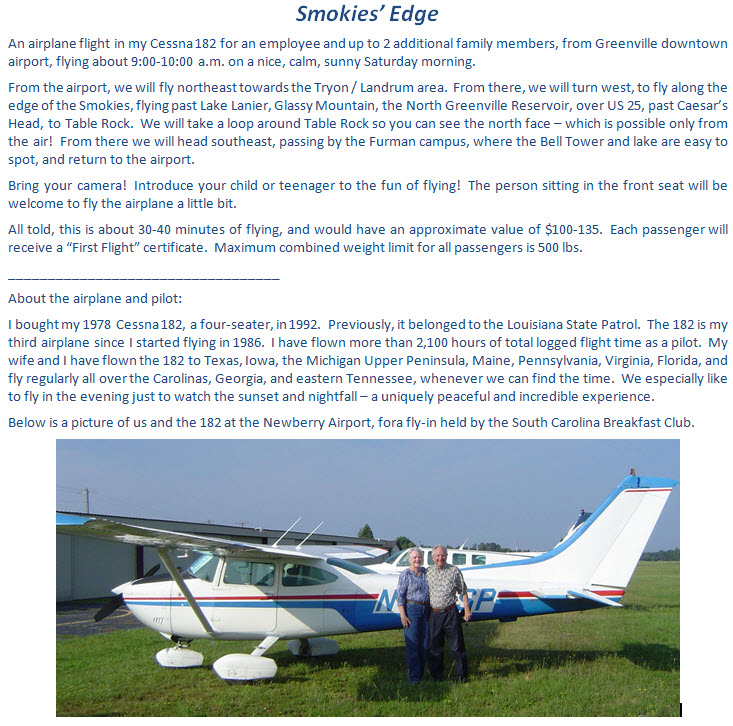
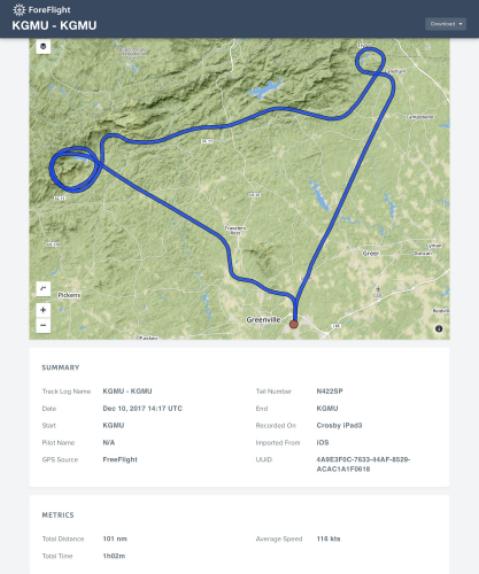
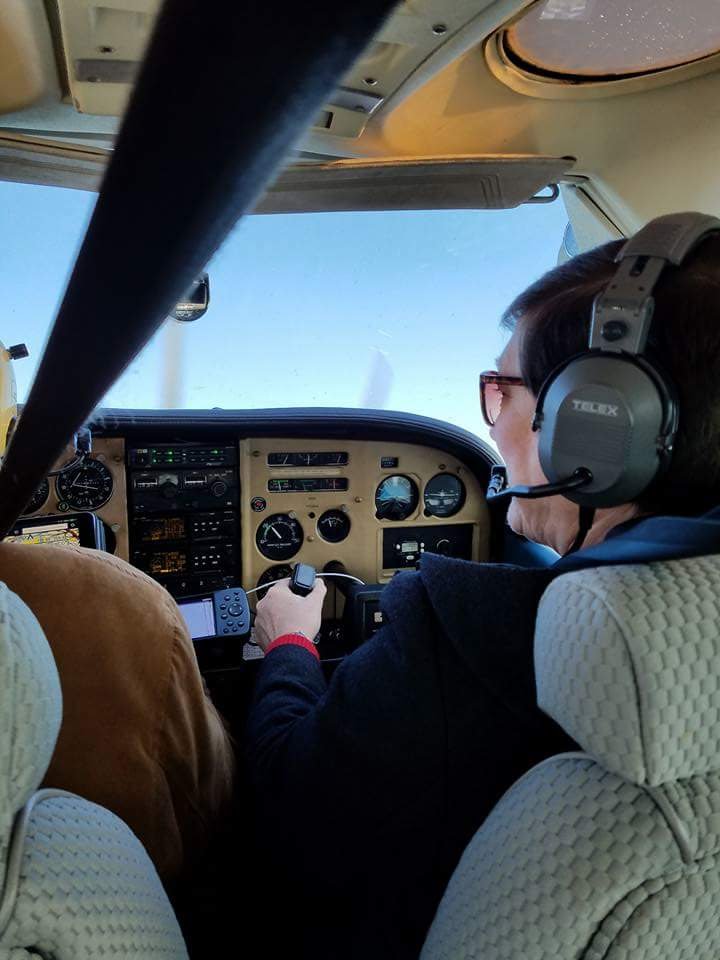
|
Left: She took off, turned on-course, climbed to altitude, flew on-course and
straight-and-level. Made it look easy. Total piloting time: 20 minutes.
Below: Posing with First-Time Flight Certificates in hand!
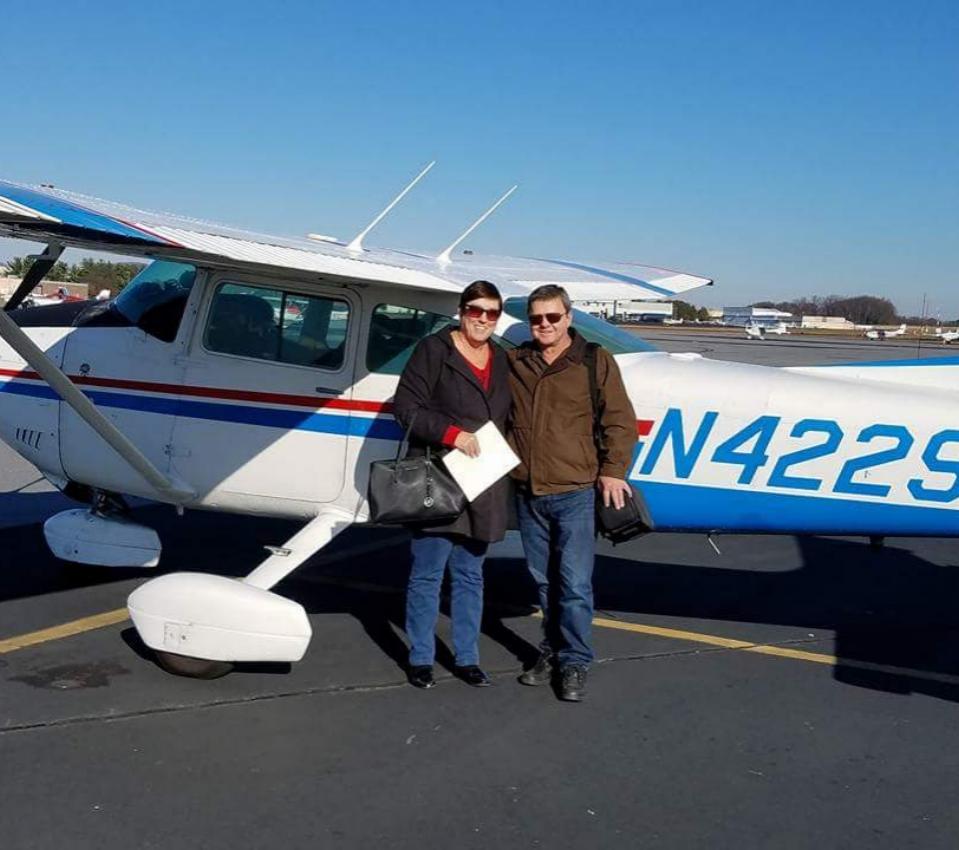
|
"I just wanted to thank you again for taking so much time with us on Saturday. That is something I will never forget. It was more amazing than I thought it would be. I have never experienced flying like that nor have I ever flown a plane. That was just so exciting that I cant tell you how I felt afterwards."
This kind of response is not unusual, and you know you have changed somebody's whole perspective on flying.
If you do something like this, (1) be sure you understand all of the applicable FARs regarding charity flights, etc., and (2) contact your local Flight Standards District Office (FSDO), and coordinate your plans with them. Talk with them before you offer the flights; make sure what you put up for auction is legal. Make your flights a great experience for everyone.
Go to top
Learning to Fly
In 1986, the movie Top Gun hit the big screen. As I came out of the movie theater after seeing it for the second time, I decided, "This is too good a thing to feel second-hand."
I had flown several times before that with a friend from work, in his Cessna 177 Cardinal. The next day he walked up to my desk as usual, to say hello and chat. I told him I was ready to learn how to fly. Whatever it was going to cost, I was ready to do it. Would he know of an instructor?
Indeed he did. My friend was never one to be in a hurry; he kind of ambled along, getting to where he was going when he did. His desk was in another building and on another floor.
Maybe so, but barely ten minutes after he left, I got a call from my soon-to-be first flying instructor, to set up the appointment for my first flying lesson.
So it began, on the evening of the 12th of September, 1986: I spent an hour, according to my log book, doing "Orientation, pre-flight, aircraft familiarity; climbs, descents, and turns", in N14SW. "November-one-four-Sierra-Whiskey" is a Cessna 150 two-seater that was a part of the fleet at Carolyn's Flight Academy, owned by a tough instructor named Carolyn Pilaar. She set high standards for training her students; standards which have probably saved my life more than once. Just the kind of instructor you want to find.
Taking about two hour-long lessons each week, I got my license on the 25th of April, 1987. In February of 1988, I began taking lessons for my Instrument rating, and and passed the IFR check-ride that August. More than 38 years and 2850 hours of pilot time have been logged since those flying lessons began, in all kinds of weather. And always remember: when the FAA Examiner says, "This is a license to learn," he's not kidding.
1995 With my 182 and Walt Horstman, who helped me get started, putting me in touch with an instructor and finding my first airplane.

Learning to fly - posted on Facebook 25 March 2025
I was talking with a friend recently about the cost of learning to fly currently, and he said some people are learning to fly in a Cirrus, at $800 / hour! Must be nice to be so rich. A Cessna 150 is a great and inexpensive way to learn how to fly. I learned in 757LB and 14SW, and my own 6673S. It is much cheaper to fly in a two-seat Cessna 150/152 or, for not much more, an older four-seat Cessna 172 or Piper 160 / Archer.
Whatever you fly, it still takes about 55 hours of flight time total, assuming you fly 2-3 times a week to reinforce what you have learned, so you don't forget before you get a chance to fly again. Doing so, you should be able to pass your check ride 7-8 months after your first lesson. We know of a couple of guys who have been taking lessons for over a year, and have still not soloed(!). But neither student is flying enough - once per week, and sometimes skipping a week.
Also crucial:
(1) Find an instructor who is not just building time to get into the airlines, and who will leave at the first opportunity, but rather one who is older or simply just wants to instruct. Switching instructors adds several hours of additional flying time, since the new instructor does not know what you know and what you do not know, and so will (must) repeat things you already know - which you must then pay him for.
(2) Find an instructor you like / get along with. If he (or she; there are plenty of good lady instructors) is rude, yells, takes the controls out of your hands, etc., he may not be the one for you. A good instructor-student rapport is important.
Teaching is a skill. Being able to do a thing is not saying you know how to teach it. Teaching is (1) explaining and describing what is to be learned, (2) demonstrating and showing what is to be done, and (3) having the student do it (especially in flying, repetition is necessary for proficiency) - and enjoying the whole process.
Go to top
Aviation-oriented Weather Learning About Weather and Flying
Learning about how weather works and its impact on your flying is crucial. If you are too cautious, you will not be able to fly as often as is really possible. If you ignore how the weather is developing along your route of flight, you risk finding yourself in a dangerous situation.
These two PDFs are available for download.
Making Sense of the Weather (PDF)
provides a general overview of weather. It also introduces Skew-T Log-P charts, which teach you how to understand vertical weather - the weather at each altitude. These charts are an excellent resource for pilots.
The webpage Vertical Weather Skew-T Log-P Charts
provides more detailed information on Skew-T Log-P charts.
Flying in Weather (PDF)
helps you to understand the weather in different regions of the U.S., and how to deal with them.
See also the webpage Aviation Weather,
which provides an aviation-oriented view of the weather.
Go to top
Buying an Airplane
When you start to fly, you only need a two-seater the only person who can be in the air with you is your instructor. You can buy a two-seater Cessna 150 for about $40,000. The insurance is about the same as for a car; possibly a little cheaper. Just like for a car, you can get a loan, so all you really need is a down-payment. 150s were sold in the late 1960s and early 1970s, so they are depreciated as far as they are going to go; the price does not change much, except as the engine wears, and when you improve the avionics. Let pilots know you are in the market, once you are sure you want to be a pilot. Also, begin scouting around for a well-recommended aviation mechanic you can trust. When you find a plane you like, pay him to check it out; it will be money well spent; a good investment.
1987 July 4 My first airplane, a 1968 Cessna 150, from December 1986 to September 1989
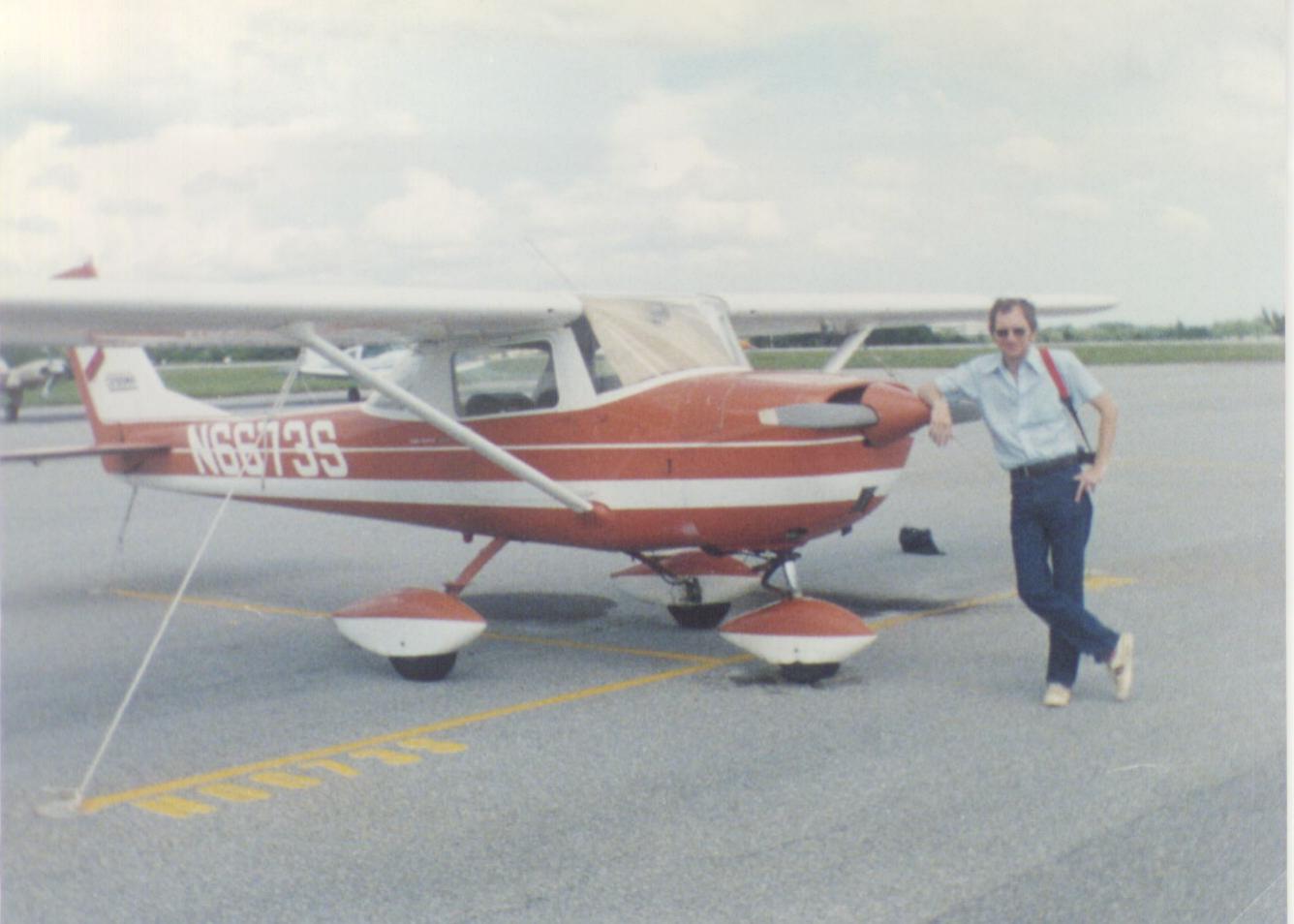
Note the 150's N-number painted on the tie-down spot!
Since a 150 does not depreciate, when you go to sell it, it will still be worth about what you paid for it a little less, since the engine is a little more used, or if you have the engine overhauled, quite a bit more. That means you have that much money about $40,000 to use as down-payment for a four-seater, like a Cessna 172. Those can be found in the $80,000-100,000 range, depending on age and avionics. That means your new loan is not much more than the loan you had on your 150.
My second airplane, a 1965 Cessna 172, from February 1990 to June 1992
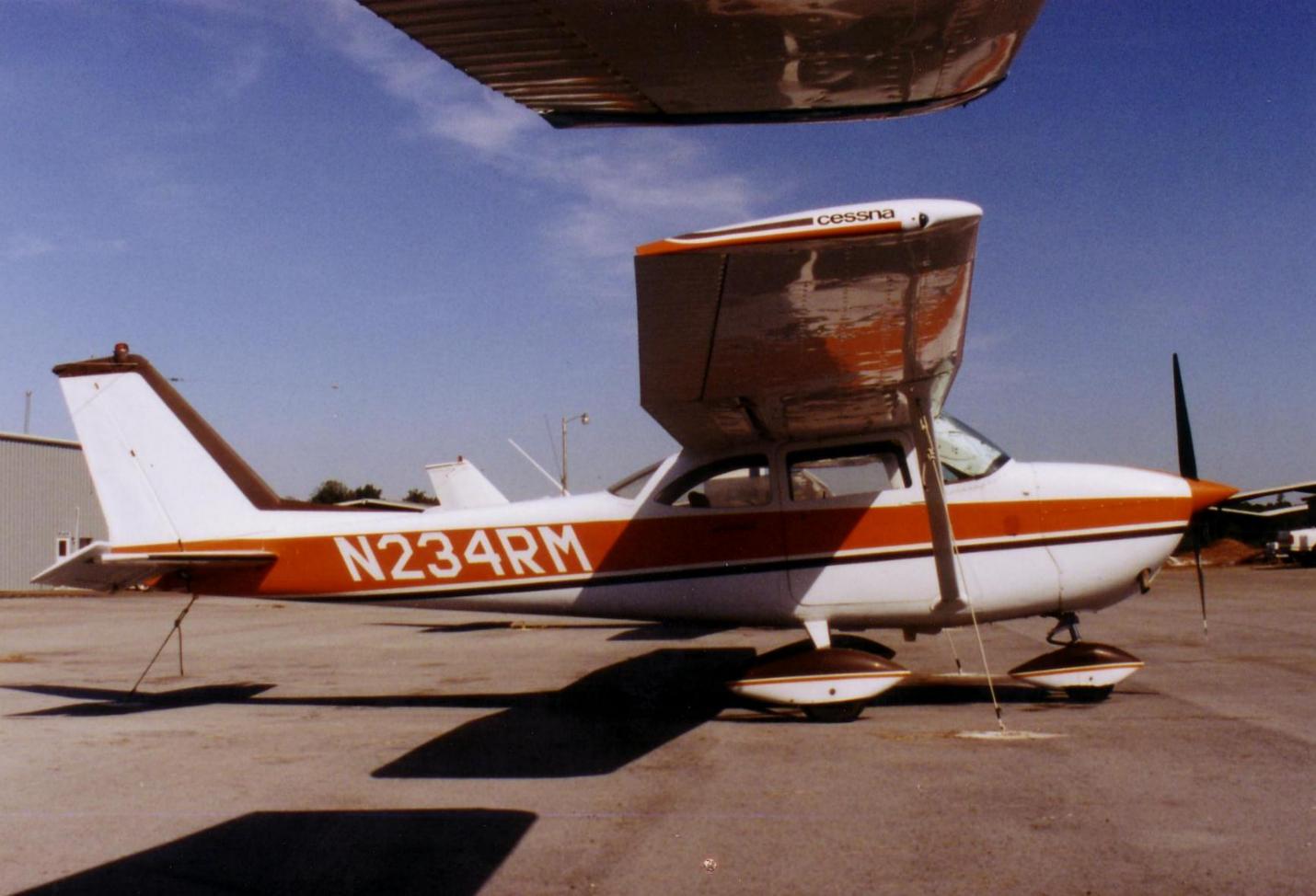
At some point, get your Instrument Flight Rating (IFR), so you can fly through clouds. Until then you are limited to flying VFR (Visual Flight Rules) in clear weather, which is not always present at a convenient time like when you want to go to or from that favorite vacation spot. Be warned: flying in clouds without your IFR rating is fatal (which is why it is also illegal) just ask John F. Kennedy, Jr. The number-one cause of crashes for VFR pilots is flying VFR into IMC (Instrument Meteorological Conditions) as happened to Kobe Bryant's helicopter.
When the 172 becomes too small and too slow, you sell it for roughly what you paid for it and use that towards a down-payment on a 182.
My third airplane, a 1978 Cessna 182, since August 1992
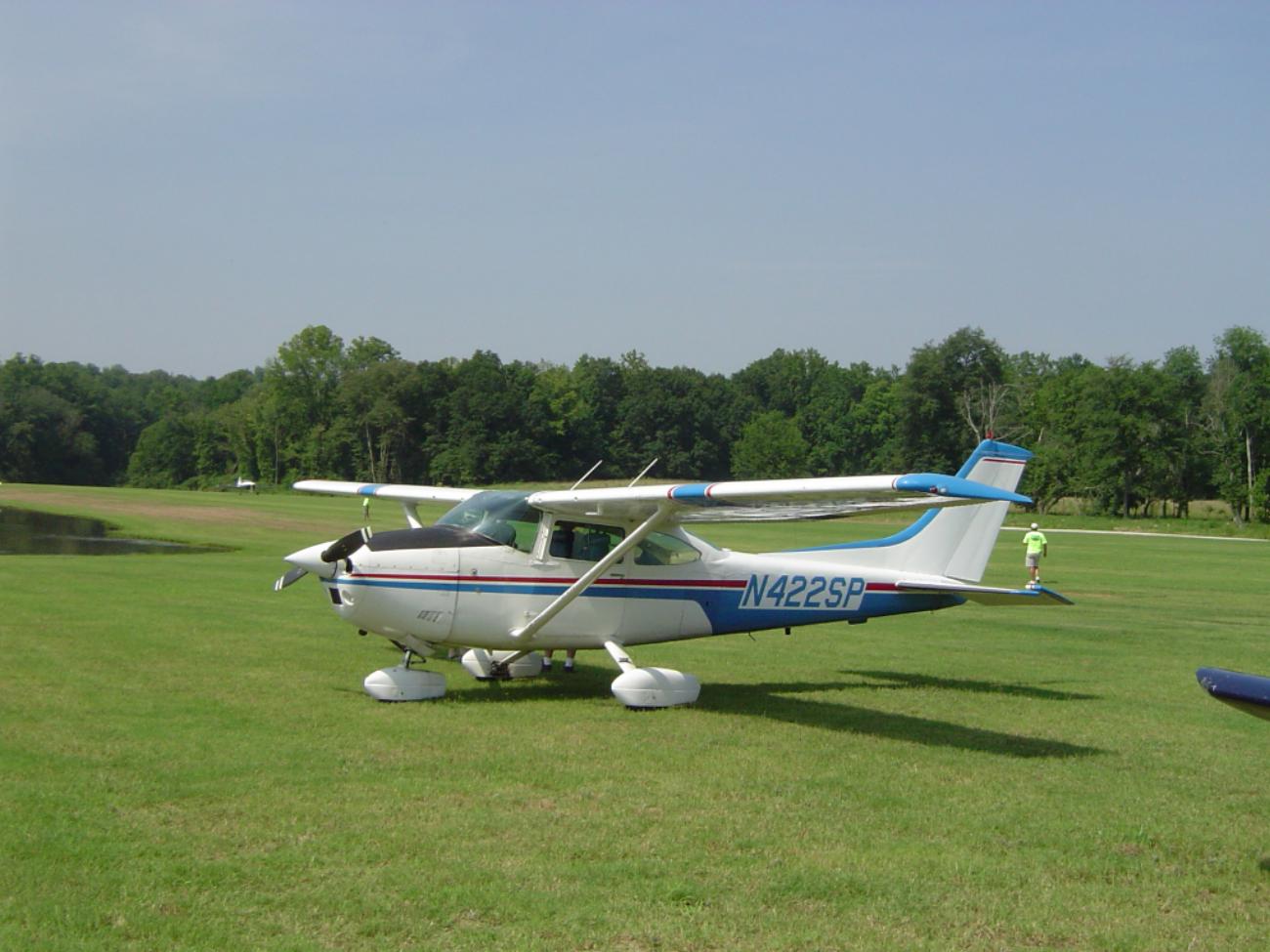
Like most things in life, that's not all there is to it, of course. A 150 can be flown for about as much as it costs to own a car. A 172 costs a bit more, but it is faster and can fly further. For a 182, plan on spending about $20-25,000 a year, on average (including avionics upgrades, and engine and prop overhauls in 1998 and replacements in 2013). Most people fly 70 to 100 hours a year. But that is how you work up to being able to afford the airplane you ultimately want to have.
When your family is just you and your spouse, and you cannot afford much, buy the 150. When you start to have kids, you move up to the 172, which holds four. When the kids begin to strain the weight limits of the 172, you buy the 182. The cost of flying grows at about the same rate as your income. If you have more than two kids, buy a Cessna 206 six-seater.
There are of course many other airplanes, of all sizes. But these examples get you started. Once you learn more, you can make further choices as you decide what you like and want in an airplane.
Why I Like the Cessna 182
- It is easy to see the scenery, and you can open the window to take a picture.
- A 182 has two doors, so there is no need to crawl over a seat to get out.
- A 182 makes a passable umbrella in the rain even a heavy rain for just standing, or when loading or unloading people and baggage, or while hugging relatives.
- When taxiing a 182 on a hot, rainy day, you can open the windows a bit for a little air. The propeller provides a nice breeze, and the rain mostly is going by too fast to come in.
- You can load full fuel, four adults, and enough baggage for a week in a 182, and it doesn't care. A 182 can carry virtually anything you can shoehorn into it. And if you do need an extra 150 pounds of load for people and baggage, having 25 fewer gallons of fuel in a 182 with 80-gallon tanks still allows for 3 solid hours of flight, plus reserve.
- A 182 with 80-gallon tanks carries over six hours of fuel. I will need to land before it does.
- A 182 with 80-gallon tanks carries over six hours of fuel. When you subtract the FAA's fuel requirements, particularly when your destination airport is IFR and a good alternate is about an hour away from your destination (there is always a strong headwind on your way to the alternate, and don't forget that flying an IFR approach eats up 20-30 minutes all by itself), a 182 still has enough fuel that you plan your flight based on the fact that you will be the one that must land first.
- A 182 only needs one stop to refuel. A fuel stop takes about an hour (descent, fly the approach or pattern, taxi, refuel, file flight plan, pay the bill, taxi, climb back to altitude), which is a long time when those summertime cumulus clouds are intent on building into cumulonimbus clouds, you have to be at work tomorrow, and spending a night in the No-Tell Motel nearby whatever remote airport you landed at is not on your bucket list.
- A 182 is fast enough to get just about anywhere east of the Rockies in seven hours of flying, with only one fuel stop, but cheap enough you can go up flying in the evening just to watch the sunset. Both are roughly equal in importance.
- A 182 is roomy enough that you are not getting intimate with the person sitting next to you on a seemingly continual basis.
- A 182 with a Continental engine has an unbreakable fuel pump that never needs repair gravity.
- My flight bag, which judging by its weight must include the kitchen sink, fits between the front seats where it is always within reach.
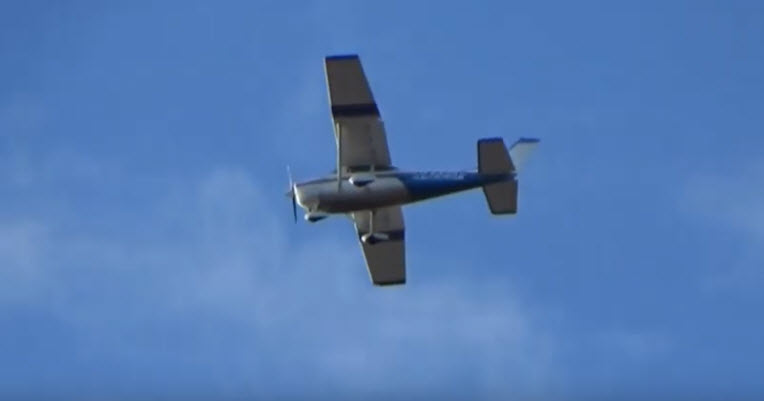
After I had owned the 182 for a couple of years, I started thinking about moving up to a 182 retractable, or to a 210.
"How many times a year do you fly further than 600 miles?" my instructor asked.
"Two or three times a year," I replied.
"With a retractable airplane, you will save fifteen minutes two or three times a year. Your maintenance costs go up 25%, your annual inspection cost goes up 25%, your insurance goes up 25%, and for a 210, your fuel costs will go up about 25%. Is it worth that?"
I decided to stay with the 182.
In the late 1980s, a General Aviation group placed an ad in several magazines with the byline, "The answer to too many days on the road goes right over most people's head." I have looked through my old magazines, but I have not been able to find that ad. However, I have not forgotten that byline.

Go to top
Flying Stories
A Little Grass Airstrip
The Triple Tree Aerodrome has a grass airstrip 7,000 feet long, and 300 feet wide. I first saw it on January 27th, 2007, from the air, during my Biennial Flight Review (BFR). Back then, there were no buildings. My instructor pointed to it, and asked me to do a practice emergency landing but I could not find the airstrip he was pointing to. "It's Right There," he said, pointing down. I had never seen a grass strip bigger than 2800 feet long by 75 feet wide, and there was nothing like that down there to see just a big, long patch of what had to be a farmer's field ...
Tough Guy
Flying into the Do-Little airstrip for the Breakfast Club, a huge raccoon trundled across the runway just about where we were set to touch down. He saw us at the last moment, ran and somersaulted off to the side and stood up, as if to say, "Come on! Just try me!"
In the Laurens News
Below is a story from the Laurens County Advertiser newspaper on the September 18, 2011, visit to the Laurens, SC, airport by the S.C. Breakfast Club. I gave a short ride to the editor's son and the editor. Just a quick flight "around the pattern", but both were thrilled and excited!
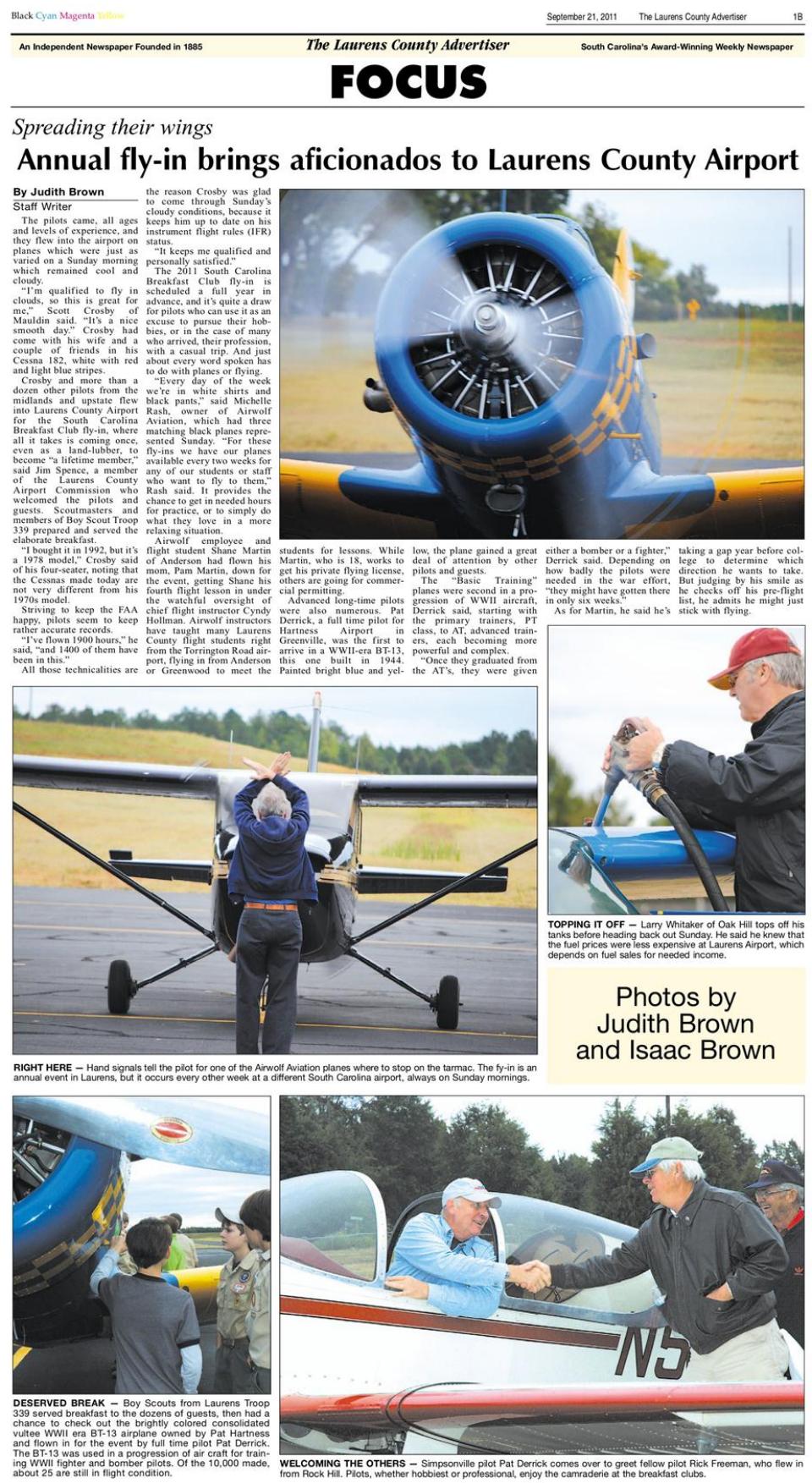
Laurens News Redux
In September of 2016, I contacted Judith Brown, the editor of the Laurens County Advertiser, whom I had taken up for a short flight in 2011, during an SCBC fly-in at Laurens Airport. Would she be interested in flying in to the annual Triple Tree Aerodrome fly-in, and covering that event?
So once again she and her son went flying, this time joined by a Spanish exchange student their family had been hosting. Everyone had a great time, checking out all the airplanes, attending some of the talks, and watching the warbirds and other airplanes take off and land.

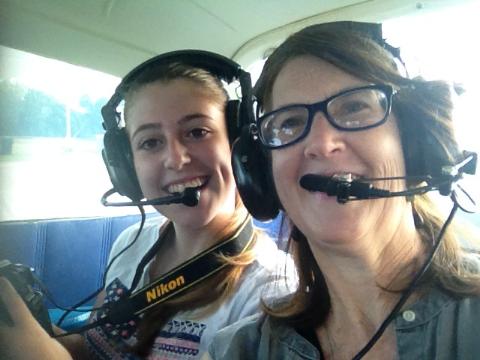
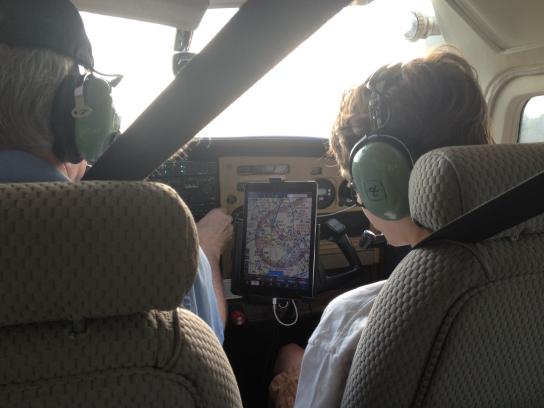


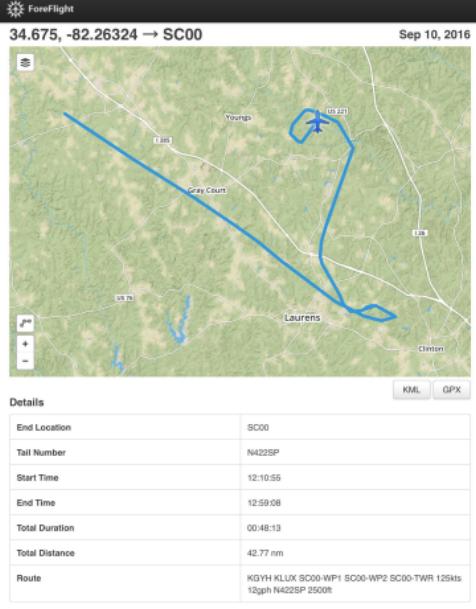

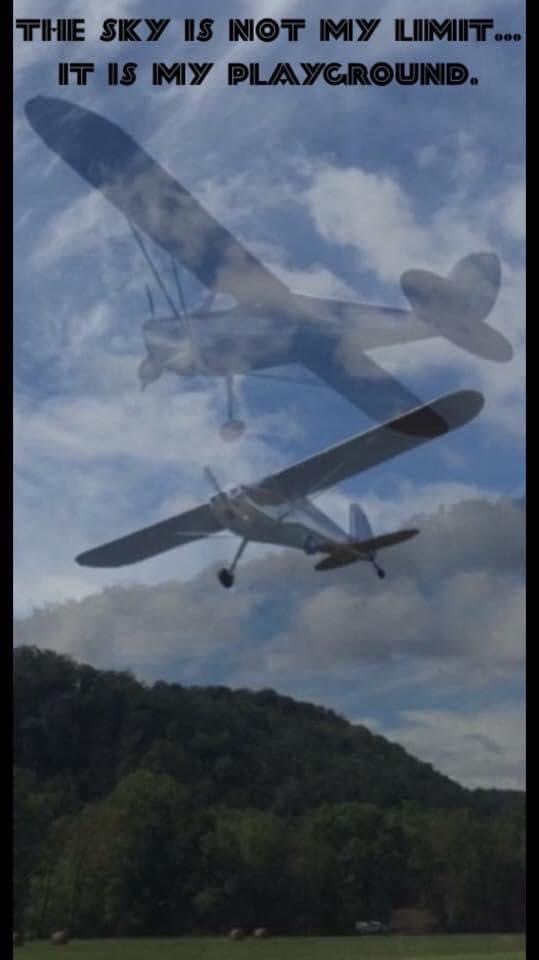 The Ultimate High
The Ultimate High
There comes a point in your training as a student pilot when your instructor tells you to let him out, and do three trips around the pattern.
You do your best to remember everything you need to say on the radio, and what you need to do at every step to control the airplane. It's all the same as you have done dozens of times before and it's suddenly all different. You pull out onto the runway, and line up the plane; you give it full throttle, start rolling, and quickly pick up speed.
And then all of a sudden, you are in the air no longer on the ground and you have the realization that nobody can get you back safely on the ground but you.
Three times around three take-offs and three landings, and then it's done; you've done it. Three times you took off, and three times you landed safely and in control. You have proven to yourself that it is not a lark; that you can do it any time you want to. You have flown.
Driving home after my first solo, I just could not stop grinning a big, face-wide grin, from ear to ear.
Other drivers, if they saw me, must have thought I was on drugs. But I had just done something far beyond anything they knew I had flown an airplane, and returned it safely to earth. I was becoming a pilot.
The Backwards Check-ride
A check-ride includes recovery from "unusual attitudes". I get motion sickness, so I asked the FAA Examiner if we could save that for last, and he agreed. When the time came, he said, "You put the plane in unusual attitudes, and I'll recover." So that is what we did. I guess I did it well enough; I passed.
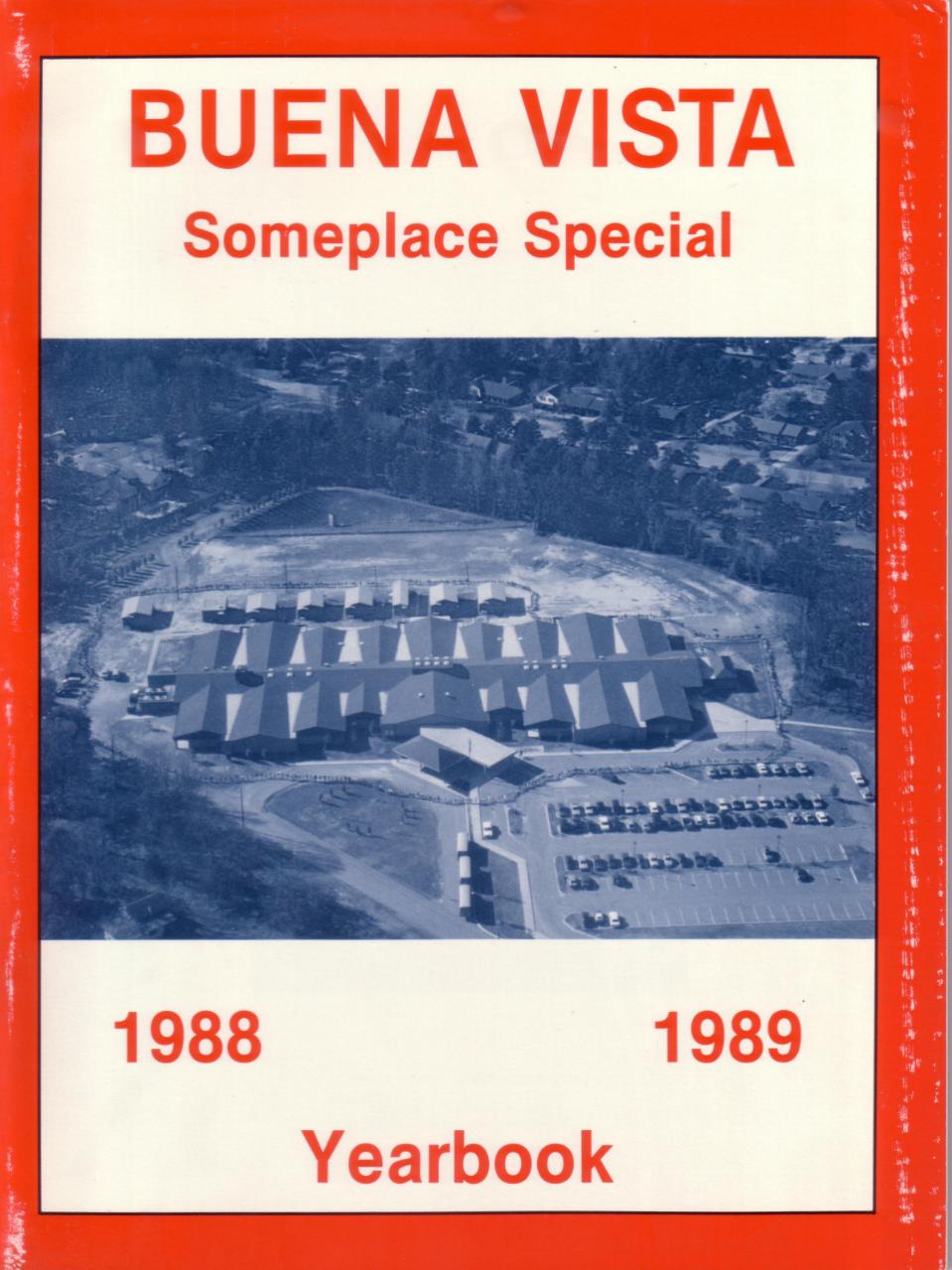
The 150 gets baptized
If someone in the airplane is prone to air-sickness, there are two sure-fire ways to increase the probability of that happening, even on a calm day on a smooth ride. One is to look out the side-window straight down; the other is to fly in circles.
A friend at work asked me if I would like to help her with some photography: the kids at her child's school would form a ring around their school, holding hands, while we flew overhead, so she could take pictures.
It was just a few minutes from our take-off in the 150 at Greenville Municipal Airport until we were circling above the school building and she began snapping away. We had made two or three laps, when I realized she had stopped talking a sure sign of a stomach giving notice of its intention to revolt.
We were nearer to the Greer Airport so, photography completed, I headed over there to get her on the ground as quickly as possible.
I could tell it was going to be a close race, and we almost made it. But barely a hundred feet above the runway, her stomach won.
She quickly recovered and soon felt better, aside from a bit of embarassment. Back at work the next day, she was able to have a good laugh about it, retelling the story to our friends, and the school was of course very pleased with that yearbook's very special front cover.
Cloudfalls
It was a beautiful Sunday morning, sunny, clear, and bright a perfect day to go flying. I grabbed my flight bag, and headed to the airport. On the way, I passed a church, with people going through the doors into the dark interior.
Reaching the airport, I parked the car and quickly walked across the ramp to where my 150 was tied down. The preflight took just a few minutes, and without delay I was airborne. I headed north for one of my favorite routes, along the mountains and lakes. I climbed higher than usual, up to 6,500 feet, high above the world, smooth and serene, giving me a view deeper into the Smokies on this beautiful morning.
The mountain valleys were covered by a lake of thick morning fog. The higher mountains poked up around the fog, surrounding it and providing a bowl a dozen miles wide to contain it.
Flying west along the line of hills, the breaks between hills formed little V's, where the fog tumbled out, escaping from the mass beyond, like waterfalls from a lake.
But while there was fog in the mountains, there was clear air and warm sunshine to the south. The sun quickly warmed the falling, tumbling fog, which evaporated and dispersed even as it fell, first into ever-fainter, more whispy curlicues, and finally into nothingness cloudfalls that never reached the ground.
Speeding along the Blue Ridge Parkway
As anyone who has travelled on the Blue Ridge Parkway knows, the speed limit along the entire length, from Virginia to Tennessee, is forty-five miles per hour. Some of us are also very aware that the Parkway's rangers are fairly strict when it comes to enforcing that speed limit.
It was a beautiful, sunny weekend a great time for us to take along another couple to whom we had recently promised a nice, scenic flight in the 182. We flew out to the lakes, and then turned north, over Hartwell, Keowee, and, climbing higher, over Jocassee. But rather than turn east towards Table Rock, we continued climbing, on up to 6500 feet, and headed up into the Smokies. We reached the ridgeline not too far from the North Carolina Tennessee border, and then turned right to follow it towards Asheville. Our flying was parallel to the Blue Ridge Parkway, which we pointed out to the delight of our two passengers.
And then the punch line: "Tomorrow at work you can tell everyone you did 150 miles per hour along the Blue Ridge Parkway."
The IFR Check-ride Cathedral
I flew the check-ride for my IFR ("Instrument Flight Rules") rating under the hood i.e., wearing a large visor that limits your vision to just the instruments, since the weather failed to provide enough real clouds. At one point, however, the Examiner said it was okay to take off the hood; we were immersed in clouds.
And then we burst out of them into the biggest cathedral ever seen by human eyes! We had entered from the back wall; the vaulted ceiling of clouds was hundreds of feet above; the immense side walls rose to meet it from a rumpled floor of clouds that could have been pews, hundreds of feet below. We flew above the center aisle, and in seconds we were flying through the clouds of the front wall, high above the cloud altar.
Cloud shapes are in constant flux; nobody would ever see that cathedral but us.
IFR the Next Day
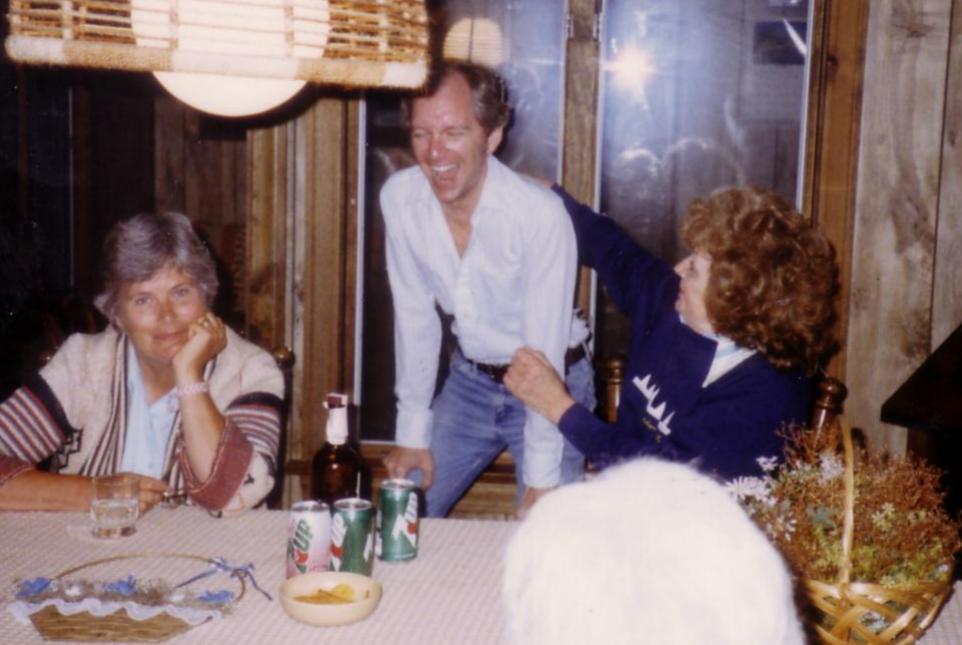
I took my IFR check-ride on a Friday. The next morning I took off in my 150, headed for an overnight stay at State College, Pennsylvania, from where I would go on to Portland, Maine, on Sunday morning. It was a perfect flight for a new IFR pilot: it started clear, but as I flew north, the haze got thicker and thicker. By the time I reached Pennsylvania, I was flying through clouds a baptism by fire, but a gentle one.
And the result the next day could not have been better...
Surprise!
A totally unexpected arrival Sunday evening!
The B-52
We took my niece, about 8, and nephew, about 10, up for a flight in the 182. Their house was under a Military Operations Area (MOA), and unfortunately, it was active; we would be flying low today. We had just begun flying over the area around their house, when far off to the right, I spotted a speck in the sky. As I watched, it grew fairly quickly into a sliver, and then into wings and a fuselage.
And then kept getting bigger. And bigger. And bigger.
And it was descending. What at first had been at higher altitude was soon level with us. It continued its descent, and as it passed in front of us, we could look down from above on the broad expanse of the wings of a B-52: Even at a mile or more distant, it was huge. "We could land on that thing," I remember thinking.
It continued its flight on its way into a U.S. Air Force base about twenty miles away, leaving behind four awe-struck people in a 182.
A High Downwind
We were flying home from our first trip north in the 150, inbound to Greensboro to refuel. The clouds were somewhere closer to broken than scattered. Greensboro Approach came on the radio. Their radar was down. Unless we could do a visual approach, they would have to send us out to a holding pattern with the rest of the inbound traffic, and wait our turn. The 150 was already low enough on fuel that a hold could easily turn problematic. But right then we looked down from our 5,000 foot altitude and spotted the airport through a break in the clouds, directly below. We let Approach know we saw it, and they cleared us to land. Still at 5,000 feet, we lined up for a right downwind, and set 40 degrees of flaps. They switched us to the tower. From 5,000 feet with 40 degrees of flaps and the engine at idle we flew a perfect pattern, touching down at just the right spot on the runway.
Sideways
I was flying home from up north, midway through Virginia in the 150 at 6,000 feet (for long distances, I typically flew the 150 eastbound at 5,000 and westbound at 6,000). Washington Center came on the radio, and told me there was oncoming traffic at my altitude (eastbound at 6,000??), and asked me to climb to 7,000. I got as far as 6700 feet; that is all the 150 could give me. I had one nav pointed at the VOR ahead of me, and one pointed at the VOR behind me. I had to correct for a crosswind, and now at 6700, the DG was pointing 90 degrees to both of them. In that position, the VOR needles should eventually have begun pointing "behind" me; the north-pointing needle pointing to its right, and the south-pointing needle to its left. That never happened; they both stayed centered. Time to get on the radio. "Ah, Center, this is Cessna 7-3-Sierra. I am 90 degrees to course, and don't seem to be moving." Center came on, and gave me a route change: descend to 5,000 feet, and continue on course; my traffic was no longer a factor. On the descent I picked up the airspeed I had lost trying to climb, and presumably got out of the worst part of the crosswind. I was back on my way home.
What an IFR Pilot Does For Fun
It was a beautiful Sunday morning if you are an IFR pilot. The day was totally overcast, with cloud bases that were just a few hundred feet above the ground, just above the minimums, and with no wind to speak of. It was a great day to go shoot some IFR approaches, and maintain my IFR currency. I took off from Donaldson in the 182, and was in the clouds at 550 feet.
First on my Flight Plan was Laurens, with its GPS-8 approach, so ATC pointed us at the first waypoint on the approach. Went through the approach on autopilot, releasing altitude-hold and using the throttle to control altitude, just like you're supposed to do. Right at the minimums, I spotted the airport; I could have landed if I had wanted to. Then back up into the clouds, and on to the missed approach, and the hold.
Outbound on the hold, 30 degrees left of the outbound heading to get into the loop; I turned on the autopilot. Straight as an arrow for a minute, and then turn the heading bug 30 and then 90 degrees to the right, and then 90 degrees once more, and we were inbound on the hold, straight as an arrow; didn't even need to correct for wind. One more time around, in another perfect oval, and then I let ATC know it was time to go on to Clemson.
ATC warned us of some weather along the way, but neither the Garmin XM nor the ADS/B was showing anything worth noting. We got hardly a bump; the autopilot had no problem with direction nor altitude, straight to the start of the GPS-7 approach at CEU. It's fun to watch the autopilot make perfect little turns at each point on the approach! We broke out about a hundred feet above minimums, with the runway in sight.
Wow! Those hills are right there! That doesn't look like 400 feet down to me. Not much room for error here!
Through the approach, and on missed, heading 130 degrees as instructed by Greer, on our way home. Back in contact with ATC, and one last correction, to intercept the Localizer just outside Dyana.
Now follow the Glide Slope down to 200 feet; we broke out at about 400, but rode the Glide Slope all the way down to the ground, just for fun. What a blast! IFR is fun! What a great day to go flying!

A Bump In the Sky In Florida
Flying down to Orlando in the 172, the day was late enough that Florida's daily cloud build-ups were starting to get serious. ATC (the Air Traffic Controllers) tried to route me through the least-dangerous areas, but all of a sudden the plane was shooting up at 1,000 feet per minute, and more something well beyond the wildest dreams of a 145hp 172. I closed the throttle and pointed the airplane down, but the updraft carried us up. ATC came on the radio, letting me know that I had busted my assigned altitude. "I'm working on it," I said in reply; it is possible there might have been a slight note of tension in my voice. Then, just like I had read about in a recent magazine article, we hit the downdraft. We flew out of the clouds at the same altitude as we had flown in.
The Drum Cloud
Flying home from Orlando in the 182, the trip had been in the clouds since before we left Florida. The worst weather was in South Carolina, so to minimize our time in it, ATC routed us from Savannah to Augusta, before heading north to Greenville. Flying along the Georgia South Carolina border we were in clear air between cloud layers. Midway, I happened to spot a drum-shaped column of air about a mile wide, a few miles ahead. Its top was below us, but growing. "Watch," I told my wife. "You will see what I mean when I say that clouds mean turbulence." By the time we reached it, the drum's top had grown to be a few hundred feet above us. Our ride was smooth until we entered the drum-cloud; then it was like driving quickly over a dirt road full of stutter-bumps. That lasted maybe twenty seconds, until we popped out the other side.
Wispy, tenuous clouds with vague bounderies tend to be smoother. But sharply-defined clouds are another matter.
Summertime In the South
It was one of those Southern summers with air that is stagnant and humid, when cumulus clouds would pop up every morning across the South, from Louisiana to the Carolinas, and develop into cumulonimbus thunderstorms during the afternoons.
We were in San Antonio, and needed to get home. Going to bed at 5:00 in the evening, we woke up at 1:00 a.m., were at the airport about 2:30, and took off in the 182 just past 3:00. Climbing to 11,000 feet, we had the clear skies all to ourselves, crossing Texas and into Louisiana in the night without incident, except to watch a fascinating lightning display on top of an isolated cloud thirty miles north as we passed it at the border.
Sunrise saw us crossing the Mississippi, and we had to do an approach through a thin cloud layer into Meridian to refuel. The clouds were thicker climbing out, heading back up to 11,000 in search of a tail-wind. As we crossed Alabama the clouds continued to grow higher and higher.
Crossing into Georgia, we heard a Bonanza on his way to Florida on the radio, landing in Mississipi to refuel, just as we had an hour earlier. Flying north around Atlanta through the busy NELLO intersection and then headed toward the Electric City VOR, the clouds were now reaching up to us, and we could see the cumulus clouds in the Smokies were already building into dark cumulonimbus storm clouds.
And then we were into South Carolina almost home! We began our descent through the thankfully still-cumulus layer, still relatively bump-free. Our goal had been to arrive home by noon. We touched down at Donaldson about 11:30 a.m., finished for the day, safely on the ground and at home.
Checking the weather an hour later, thunderstorms were now dominant everywhere. It's a safe bet that Bonanza pilot was going to spend a night in Mississipi.
Short-Field Takeoff In the 172
It was still morning, and it was way up north in Michigan's Upper Peninsula, but the day was already warm and humid. Full fuel, lots of baggage, two adults, and two 13-year-olds who were growing like weeds would tax the old 172's abilities to the limits. I used short-field take-off techniques on a mile-long paved runway. And put the 172 up for sale the next day.
A Wringing Out?
In September of 1989 I moved to Huntsville, Alabama, to work for NASA on the International Space Station. For the four years I lived there, I had to use instructors who did not know me, for my Biennial Flight Reviews, IFR checks, check-outs in the 172 and the 182, etc. A couple of times they would start our conversation with, "I'm going to really wring you out." I would wait the whole flight for them to spring whatever it was they had in mind. It apparently was not all that much, compared to the rigors of instruction at Carolyn's Flight Academy. Eventually, they would say, "Well, I guess we can head back." I was never sure if the tone with which that sentence was uttered was, "I give up," or "I'm running out of ideas." Either way, I think I had had more fun than they did.
Fire-Engines Here and There
We took off from Donaldson in the 182, headed north for a Labor Day weekend visit to Pennsylvania. We were already climbing through 7,000 feet, over Greer and totally in the clouds, when I noticed we had lost vacuum pressure. There is no alarm; the instruments just start contradicting each other. You have to figure out for yourself which instruments to stake your life on, and which to disregard. We asked ATC to vector us back to Donaldson. On final approach there, we broke out of the clouds barely 500 feet above the ground. Rhoda spotted a firetruck near the end of the runway.
"What's that for?" she asked. I told her I did not know. Well, it was possible I could be wrong but I had a pretty good guess.
Then she spotted another firetruck at the other end of the runway. "Are they for us?!" the pitch of her voice seemed a little higher this time.
I admitted they were, and both trucks followed us as we taxied back to the ramp and verified we were okay as we shut down.
Thanks to Carolyn Pilaar and her instructors Carl Myers and Karen Winters, it was just another unremarkable flight entered in logbooks which now tally more than 2,850 hours of flying.
Postscript: Surviving Loss of Vacuum
I have lost vacuum pressure three times. Murphy's Law held true: all three times my vacuum pump failed when we were IFR and in the clouds.
The first time was on a flight home from Huntsville, Alabama. We had just crossed into South Carolina, and I noticed the artificial horizon (AH) and the directional gyro (the DG), which are run by vacuum, were drifting out of their normal positions. I checked the little vacuum pressure gauge, hidden below the yoke, and sure enough, it was showing no pressure. We were above the clouds, but there were no airports within a hundred miles that were VFR.
The second time was in the story above.
The third time was again on a flight home, this time from Williamsburg, Virginia. We were between Greensboro and Hickory, in North Carolina. Again, we were on top of the clouds, although we had been VFR up until the last twenty miles. There were VFR airports behind us, but I saw no reason to be stranded far from home. While the remainder of the flight would be IFR, it would be relatively smooth.
You notice you have lost your vacuum when the AH starts indicating you are not straight-and-level, or the DG starts indicating you are not pointed in the right direction. Your turn coordinator meanwhile, which is electrically-driven, is indicating what you would expect. Your GPS, if you have one, and your compass continue to indicate your actual direction.
If you are on an IFR flight-plan, of course, the first thing to do is to let ATC know you have lost vacuum pressure. They will ask you, "What are your intentions?" or possibly "Would you like to declare an emergency?" Always remember, you are pilot in command. ATC can advise (about options, weather, etc.), but they are sitting on nice office chairs, on the ground. They will go home all the same, no matter what happens to you. You are the one in control of the situation, not ATC. Your choices will depend on where you are in relation to your destination, the amount of turbulence you are encountering, fuel on board, etc. It is your plan and your decision that will determine the course of events. In the story above, ATC asked if I wanted to land at Greer, which was right below me. But from 7,000 feet, I could have landed at Donaldson in a glide with the engine out. The amount of time and maneuvering required would be about the same for either airport. Better to take the 182 to its home.
It is typically not necessary to declare an emergency. To do so just means there will be paperwork to fill out, and it will not improve your actual situation. Simply reply back on the radio the airport where you would like to land. Ask for vectors (heading and altitude), and let ATC know that without vacuum, you can take heading changes, or altitude changes, but not both simultaneously. Ask for wide, shallow turns and plenty of distance to lose altitude; do not accept sudden or quick changes. Be cognizant of the weather, and how that will affect your decisions. Make it as easy as possible for you to stay in control of the airplane.
During your IFR training, your instructor should have stressed this technique, demonstrated it, and required you to fly "partial panel" as part of your training, by covering the AH and DG and then asking you to do so, on repeated occasions.
In any case, ATC may assign you to a special radio frequency, and dedicate a Controller to specifically deal with your situation. This gets you off the normal frequency, so that Controller can resume dealing with normal traffic. It also means that your communications will not be interrupted by the normal communications of other airplanes.
If at any point ATC gives you changes to both altitude and heading (in the above story, they forgot once), remind them that you cannot change both at the same time, and ask which they would like you to do.
In the story related above, the situation was always under control; there was never any real danger. At one point, just to see what would happen, I did try to change direction and altitude at the same time. The result was predictable: I soon started to hear the air whistling as it passed over the wings. I knew that my airspeed was quickly increasing and that I had no idea what the airplane's actual orientation was. I was probably in a slip banked further than I thought and pointed downward too steeply. The first step is to level your wings, referring to your turn coordinator. Then get your vertical speed under control, using your vertical-speed indicator and altimeter. Once all that is taken care of, you can either resume changing direction, referring to your compass and GPS, or resume changing altitude (while maintaining direction), referring to your vertical speed and alitmeter, but lesson-learned not both at the same time.
I once visited a blog on the Web where surviving loss of vacuum was the discussion topic. Several people who were not pilots said it was impossible. I posted that IFR training teaches how to deal with that loss, and that I had lost vacuum three times. I checked back a couple of weeks later, and sure enough, one of the most assertive non-pilot know-it-alls had called me a liar, adding a couple of expletives as proof.
After the first loss of vacuum, my mechanic recommended I routinely replace the vacuum pump after 400 hours. But Murphy won again: the second one failed sooner than that. After the second loss of vacuum, I had an alternate vacuum source added. However, in the third occurrence, I forgot I had it available. Ah-h-h, pilot error.
When the Garmin G-5 was made available for sale, I had one installed the next week. It is a digital AH, and uses a laser, rather than vacuum. It also has a battery backup, should the electrics fail. I am told people who buy a G-5 will typically remove their vacuum system and pump entirely. I like redundancy, so I moved the old vacuum AH over to the right side of the panel. That also helps the person sitting in the right seat, should he be piloting. The AH should be right in front of the pilot; it is much harder to fly an airplane looking at the AH from an angle.
Naturally, the last vacuum pump I bought has been running perfectly ever since. Murphy has been foiled, and has gone in search of happier hunting grounds no doubt somewhere else in the airplane. I just have not figured out where, as yet.
Finally, about those firetrucks in the story above. I never really understood the value of getting them involved; if I was going to drill a hole in the ground, it was unlikely that it was going to be conveniently near the airport. But it turns out they have their own currency requirements which they must maintain. Real-life situations are always preferable to practice that simply goes through the motions. Getting involved was much better than sitting around in the fire-station. It's good to know they are there.
Night Flight From Iowa
We were ready to leave Iowa for the 675-mile flight home, but the weather was too stormy. At 3:00am I woke up and checked the weather. As I had expected, robbed of the sun's energy, the storms had dissipated in the night, but would soon return with the dawn.
We took off at 4:00am Central Time, climbing to 11,000 feet to take advantage of a 30 to 40 knot tailwind. With that help, a trip that is normally five-plus hours plus an hour fuel stop would be reduced to a non-stop four--hour flight. The night flight was smooth and uneventful. With the plane on autopilot, staying awake was the biggest problem; I constantly checked and re-checked all the instruments and found other tasks to assure that I stayed alert.
Midway over Illinois and two miles above the earth, the first hint of dawn began challenging the night, as the darkness faded on the distant eastern horizon, which quickly grew more prominent.

Slowly the sky continued to brighten, with the horizon spreading southward. By the time we reached the Ohio River and Louisville, the sun was up, and we watched its light play on the low cloud tops over the river and city.
We flew on, over Kentucky and into Tennessee, approaching the Smokies; almost home! We crossed over the mountains still in clear air, but a low cloud layer covered the South Carolina Upstate, so we were given an instrument approach into Donaldson. As expected, it was still too early in the day for the clouds to be bumpy. We broke out a thousand feet from the ground, and touched down at 9:00am, just as we had planned.
Someone Helped Me; Now It's My Turn
In November of 2016 I had helped the Triple Tree Aerodrome take about 60 high school kids up flying (14 takeoffs in 1 day!). One result: one familys new desire to learn to fly. In April 2017 I flew them and their instructor to Indianapolis to buy an airplane and fly it home!

Epilogue . . . 10 November 2019 Solo!
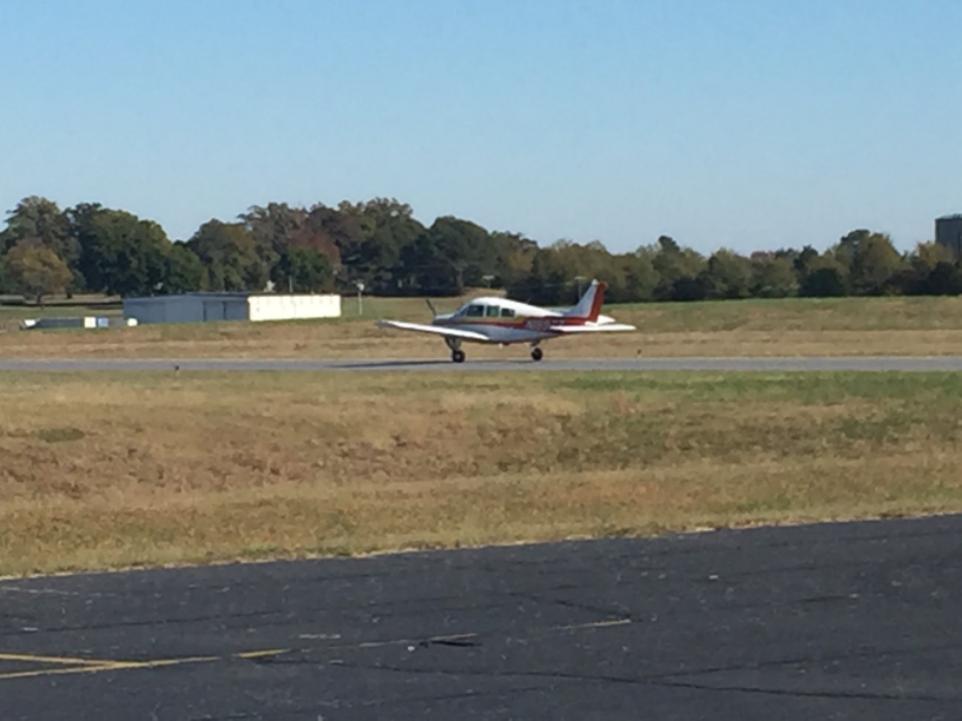

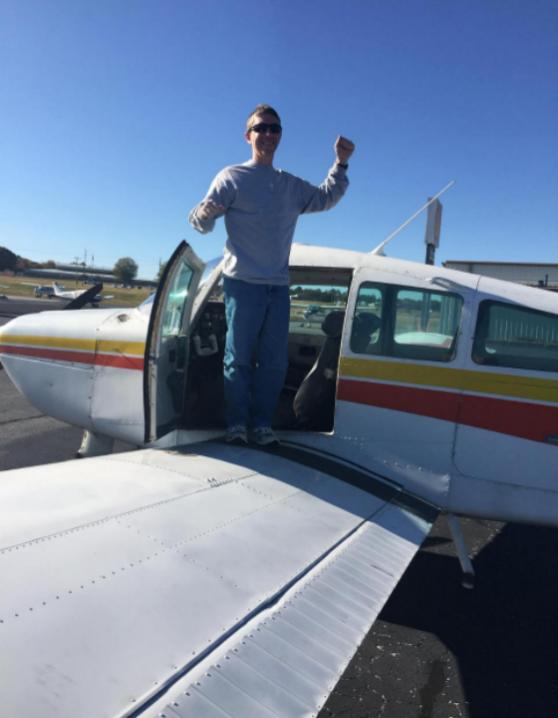
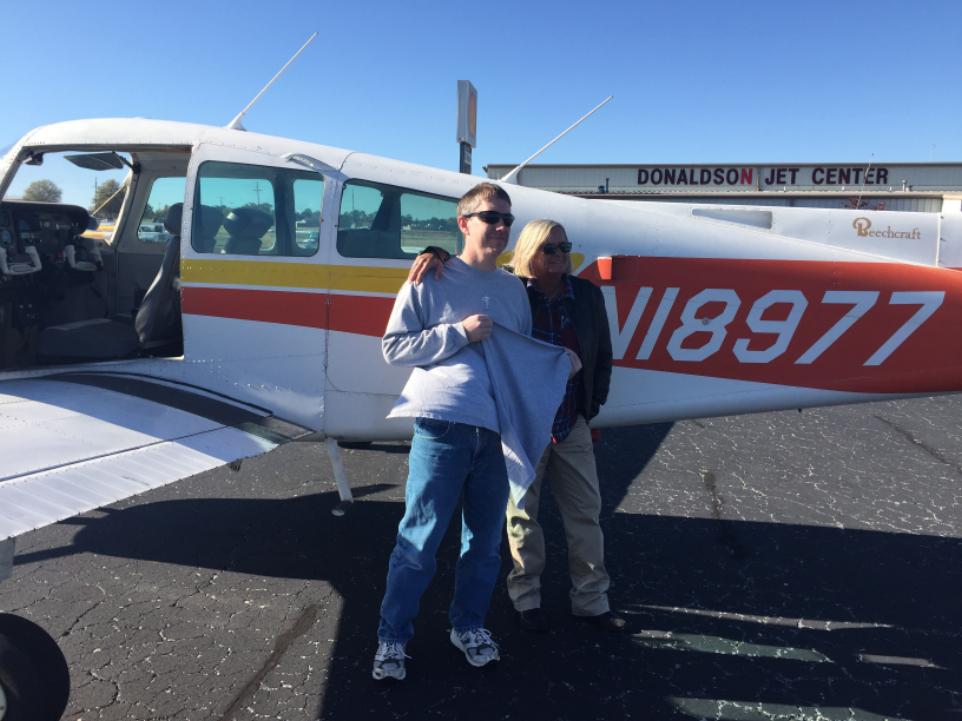
The Best Story Of All And also my first published writing in a nationally-distributed magazine.
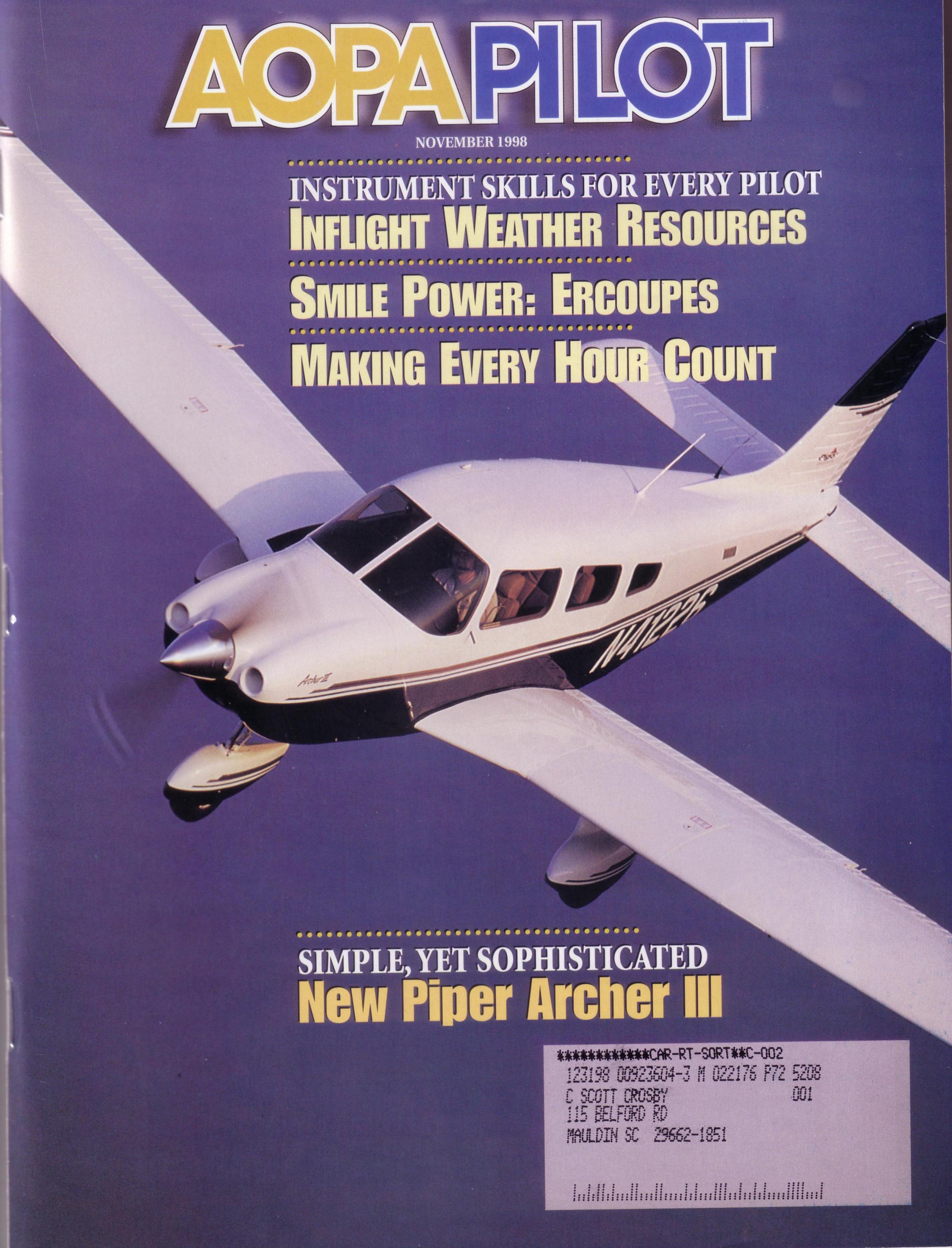
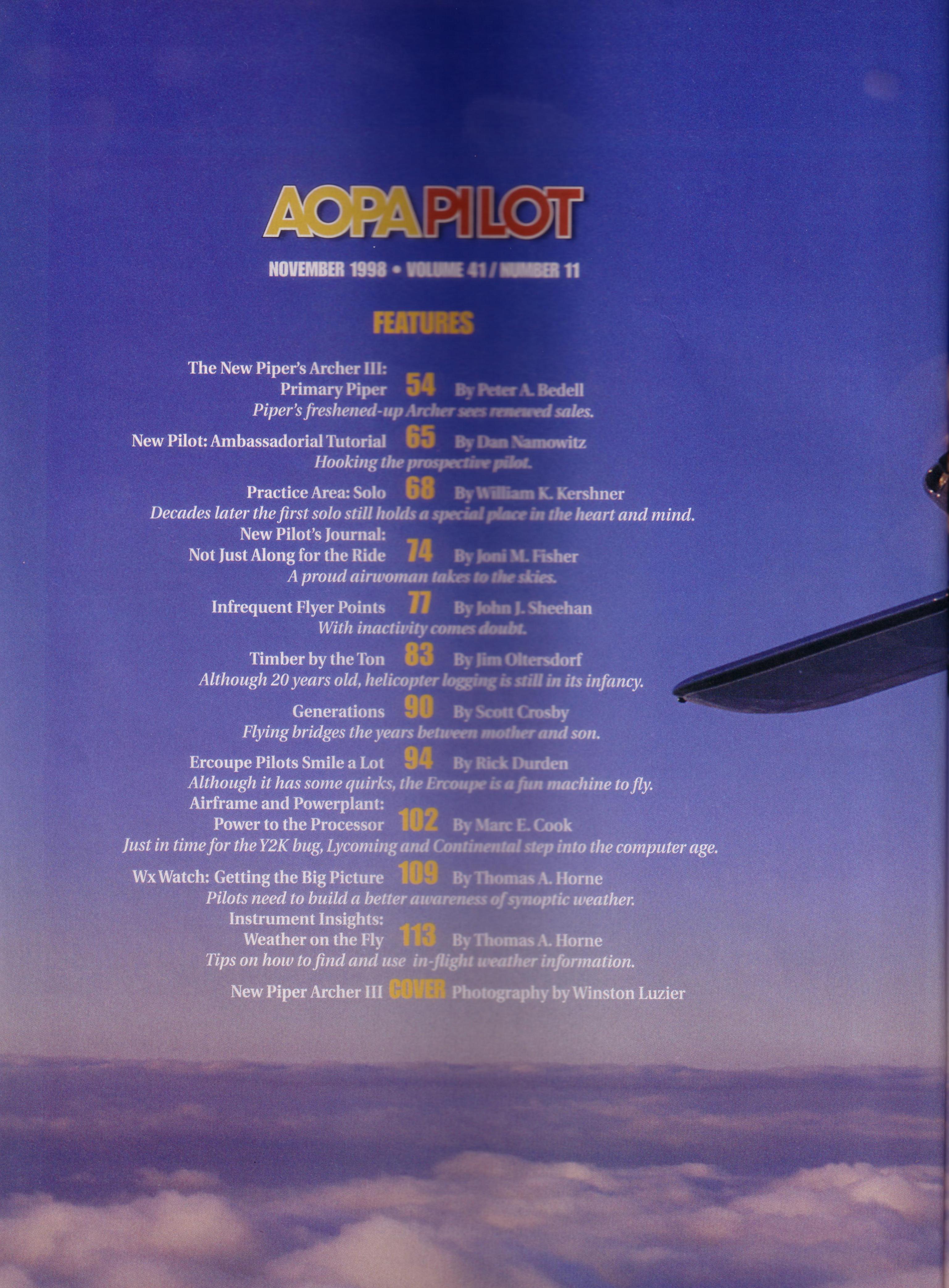
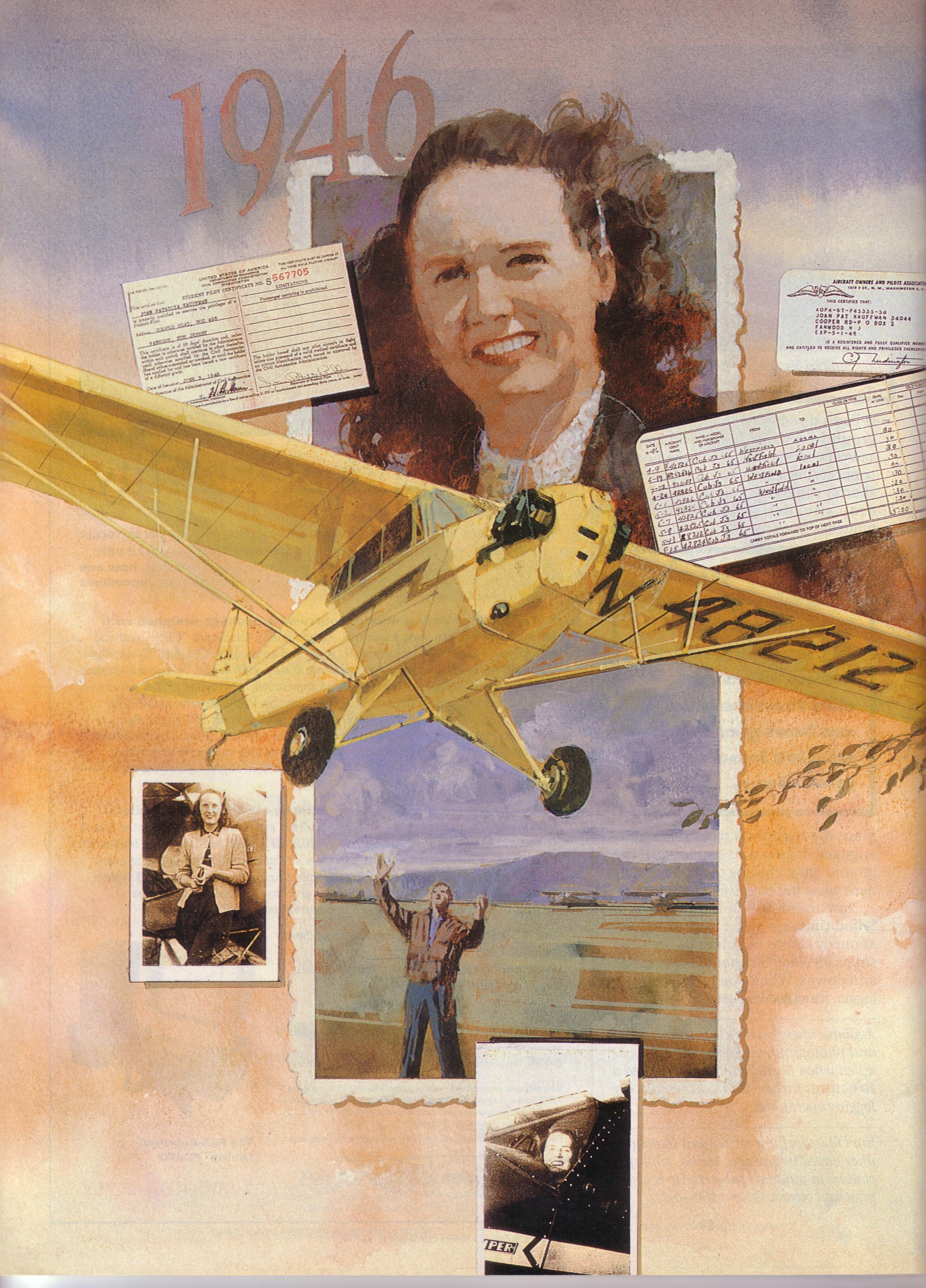
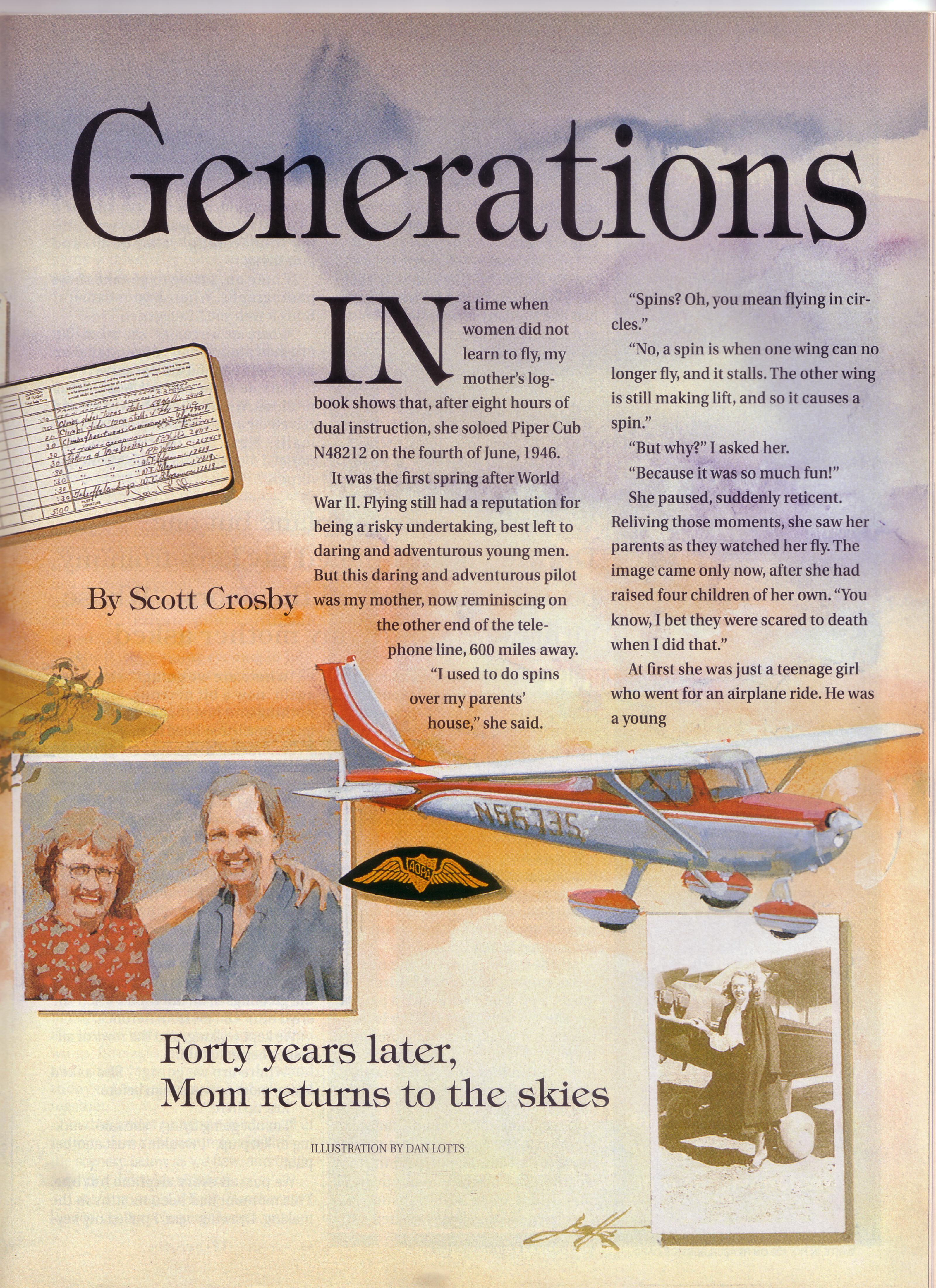
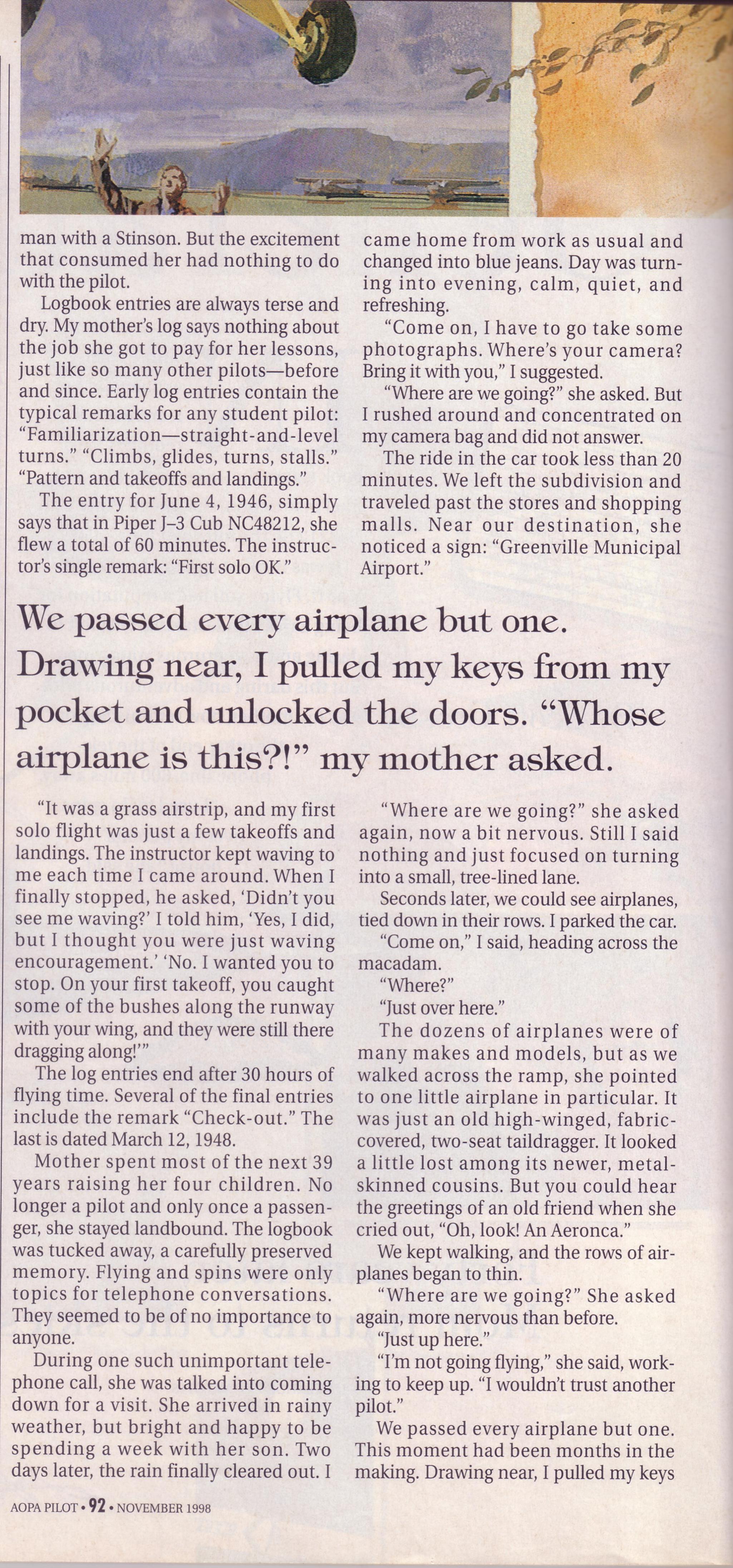

In memoriam: on October 18, 2017, she took her last flight, off into the sunset.

Go to top
Flying Humor
Click here
to hear the story of who is the coolest, fastest, baddest guy on the block ...
Humor for Instrument-rated Pilots
"I tawt I taw a puddy-tat. I did! I did tee a puddy tat."
Proving that the FAA's intersection-namers have a sense of humor, too!
But don't miss that you will cross SATAN if you are coming in from the north ...
Around Washington, DC, their humor tends to be more political... You will see it if you are on V39-143 north of there.
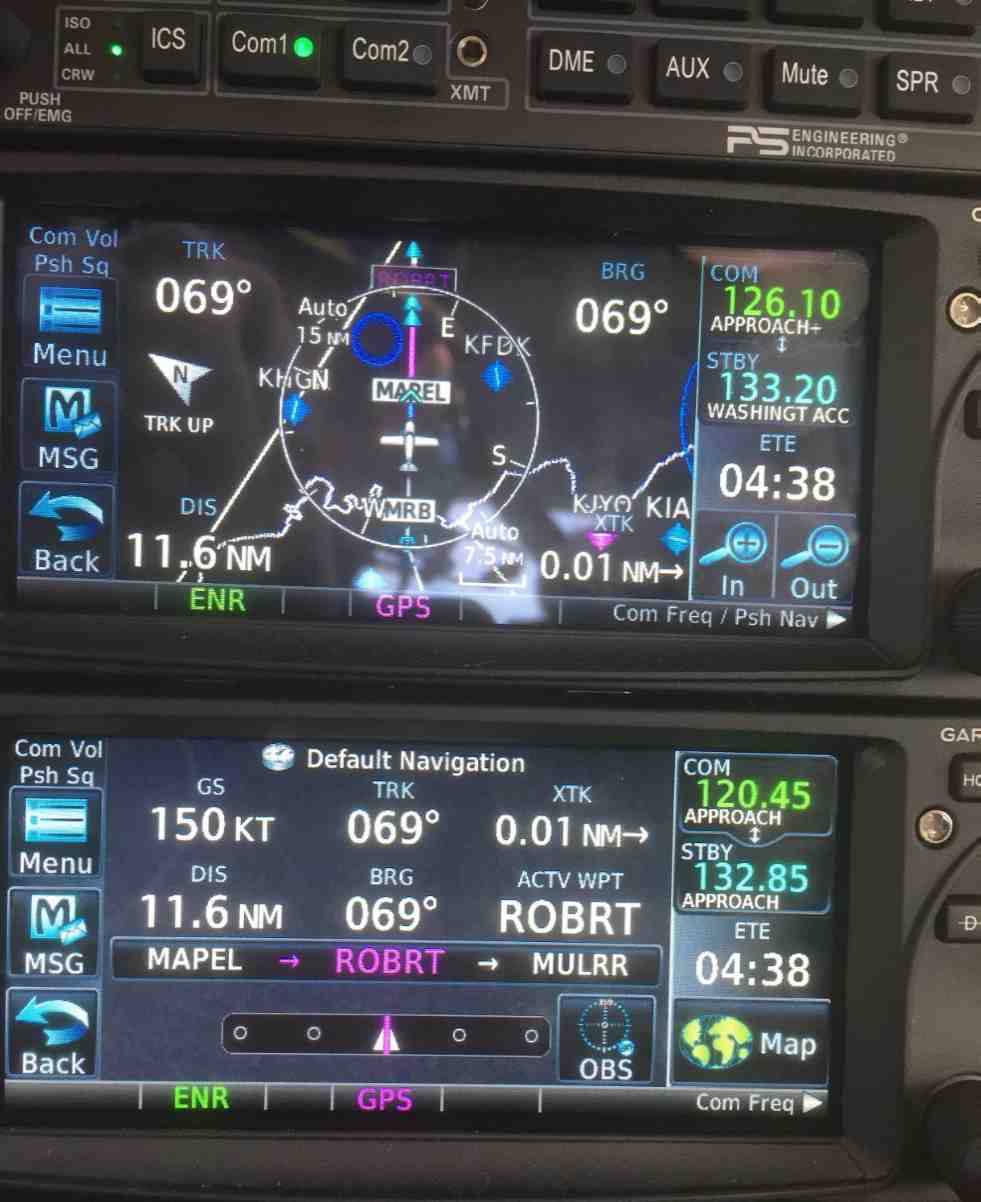
After every flight, UPS pilots fill out a form, called a "gripe sheet" which tells mechanics about problems with the aircraft. The mechanics correct the problems, document their repairs on the form, then pilots review the gripe sheets before the next flight.
Never let it be said that ground crews lack a sense of humor. Here are actual maintenance complaints submitted by UPS pilots ("P") and solutions recorded ("S") by maintenance engineers:
P: Left inside main tire almost needs replacement.
S: Almost replaced left inside main tire.
P: Test flight OK, except auto-land very rough.
S: Auto-land not installed on this aircraft.
P: Something loose in cockpit
S: Something tightened in cockpit
P: Dead bugs on windshield.
S: Live bugs on back-order.
P: Autopilot in altitude-hold mode produces a 200 feet per minute descent
S: Cannot reproduce problem on ground.
P: Evidence of leak on right main landing gear.
S: Evidence removed.
P: DME volume unbelievably loud.
S: DME volume set to more believable level.
P: Friction locks cause throttle levers to stick.
S: That's what friction locks are for.
P: IFF inoperative in OFF mode.
S: IFF always inoperative in OFF mode.
P: Suspected crack in windshield.
S: Suspect you're right.
P: Number 3 engine missing.
S: Engine found on right wing after brief search.
P: Aircraft handles funny.
S: Aircraft warned to: straighten up, fly right, and be serious.
P: Target radar hums.
S: Reprogrammed target radar with lyrics.
P: Mouse in cockpit.
S: Cat installed.
P: Noise coming from under instrument panel. Sounds like a midget pounding on something with a hammer.
S: Took hammer away from midget.
Go to top
Rules to Fly By
Know before you go.
Expect what happens. Walt Horstman
A simple checklist: Never run out of airspeed, altitude, and ideas all at the same time.
RULES OF THE AIR from the June 2000 issue of Australian Aviation
1. Every takeoff is optional. Every landing is mandatory.
2. If you push the stick forward, the houses get bigger. If you pull the stick back, they get smaller. That is, unless you keep pulling the stick all the way back, then they get bigger again.
3. Flying isn't dangerous. Crashing is what's dangerous.
4. It's always better to be down here wishing you were up there than up there wishing you were down here.
5. The ONLY time you have too much fuel is when you're on fire.
6. The propeller is just a big fan in front of the plane used to keep the pilot cool. When it stops, you can actually watch the pilot start sweating.
7. When in doubt, hold on to your altitude. No one has ever collided with the sky.
8. A 'good' landing is one from which you can walk away. A 'great' landing is one after which they can use the plane again.
9. Learn from the mistakes of others. You won't live long enough to make all of them yourself.
10. You know you've landed with the wheels up if it takes full power to taxi to the ramp.
11. The probability of survival is inversely proportional to the angle of arrival. Large angle of arrival, small probability of survival and vice versa.
12. Never let an aircraft take you somewhere your brain didn't get to five minutes earlier.
13. Stay out of clouds. The silver lining everyone keeps talking about might be another airplane going in the opposite direction. Reliable sources also report that mountains have been known to hide out in clouds.
14. Always try to keep the number of landings you make equal to the number of take offs you've made.
15. There are three simple rules for making a smooth landing. Unfortunately no one knows what they are.
16. You start with a bag full of luck and an empty bag of experience. The trick is to fill the bag of experience before you empty the bag of luck.
17. Helicopters can't fly; they're just so ugly the earth repels them.
18. If all you can see out of the window is ground that's going round and round and all you can hear is commotion coming from the passenger compartment, things are not at all as they should be.
19. In the ongoing battle between objects made of aluminum going hundreds of miles per hour and the ground going zero miles per hour, the ground has yet to lose.
20. Good judgment comes from experience. Unfortunately, the experience usually comes from bad judgment.
21. It's always a good idea to keep the pointy end going forward as much as possible.
22. Keep looking around. There's always something you've missed.
23. Remember, gravity is not just a good idea. It's the law. And it's not subject to repeal.
24. The three most useless things to a pilot are the altitude above you, runway behind you, and a tenth of a second ago.
That has also been expressed as, The three most useless things to a pilot are the altitude above you, the runway behind you, and the air in your fuel tank."
 Flying put to words
Flying put to words
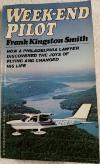 Weekend Pilot, Frank Kingston Smith, 1957
Weekend Pilot, Frank Kingston Smith, 1957
A great story of one person's discovery of flying, and his experiences in owning his own airplane.
 A Sky Of Her Own, by Molly Bernheim, 1959
A Sky Of Her Own, by Molly Bernheim, 1959
In the years after World War II, a woman in her 40s learns to fly
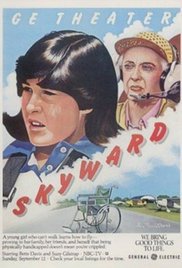 Skyward, 1980
Skyward, 1980
This is a very good movie, not a book:
A sheltered, wheelchair-bound teenage girl and those around her discover the value of truth, perseverance, and the meaning of integrity ... and the joy of flying.
Flying poetry
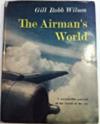 The Airman's World, by Gill Robb Wilson, 1957
The Airman's World, by Gill Robb Wilson, 1957
This wonderful book of poetry about flying does a great job of providing a sense of the spirit of being a pilot.
First Things First
by
Gill Robb Wilson
|
|
The boundary lamps were yellow blurs
Against the winter night,
And I had checked the last ship in
And snapped the office light
And paused a while to let the ghosts
Of bygone days and men
Roam down the skies of auld lang syne
As one will now and then ...
When fancy sent me company
A red checked lad to stand
With questions gleaming in his eyes,
A model in his hand.
He may have been your boy or mine,
I could not clearly see,
But there was no mistaking how
His eyes were questioning me
For answers which all sons must have
Who build their toys in play,
But pow'r them in valiant dreams
And fly them far away;
So down I sat with him beside
There in the dim lit shed,
And with the ghost of better men
To check on me, I said:
'I cannot tell you, Sonny Boy,
The future of this art,
But one thing I can show you, lad,
An old time pilot's heart;
|
|
And you may judge what flight may give
Or hold in store for you
By knowing how true pilots feel
About the work they do;
And only he who dedicates
His life to some ideal
Becomes as one with his dreams
His future will reveal.
Not one of whose wings are dust
Would call his bargain in,
Not one of us would welsh his part
To save his bloomin' skin,
Not one would wish to walk again
Unless allowed to throw
His heart into the thing he loved
And go as he would go;
Not one would change for gold or pow'r,
Nor fun nor love nor fame,
The part he played and price he paid
In making good the game.
And of the living ... none, not one,
Regrets the scars he bears,
The sheer uncertainty of plans,
The poverty he shares,
Remitted price for one mistake
That checks a bright career,
The shattered hopes, the scant rewards,
The future never clear:
|
|
And of the living ... none, not one,
Who truly loves the sky,
Would trade a hundred earth bound hours
For one that he could fly.
If that sleek model in your hand,
Which you have brought to me,
Most represents the thing you love,
The thing you want to be,
Then, you will fill your curly head
With knowledge, fact and lore,
For there is no short cut which leads
To aviation's door;
And only those whose zeal is proved
By patient toil and will
Shall ever have a part to play
Or have a place to fill.'
And suddenly the lad was gone
On wings I could not hear,
But from afar off came his voice
In studied tones and clear,
A prophet's message simply told
For this is what he said
And why his hand will someday lead
Formations overhead:
'Who wants to fly has got to know:
Now two times two is four:
I've got to learn the first things first!'
...I closed the hanger door.
|
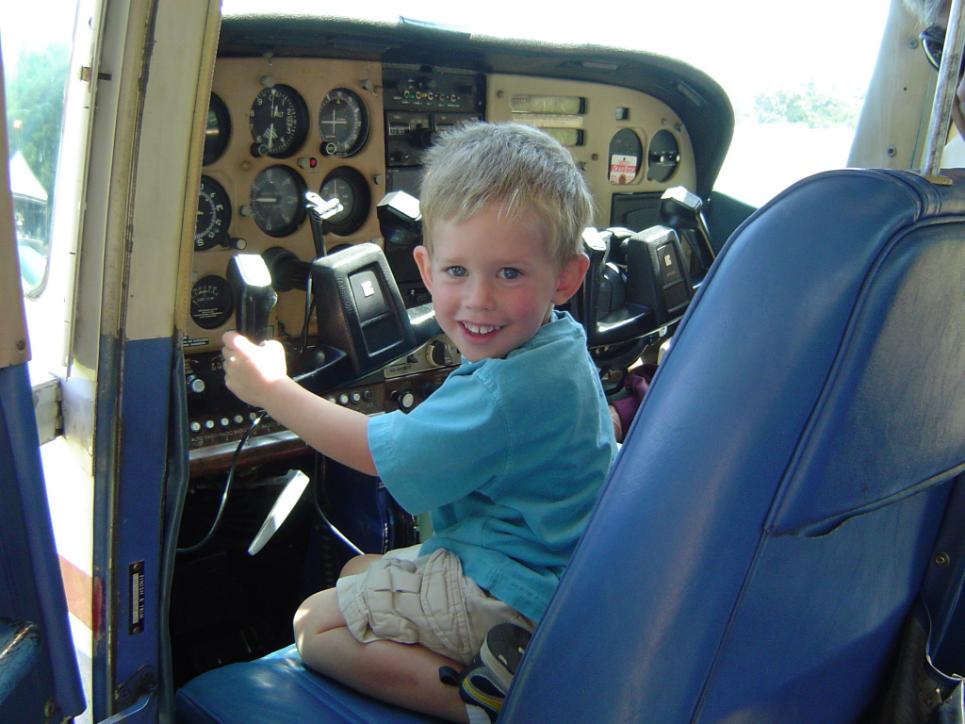
May the next generation of pilots have it this good!
(photo 18 May 2008, White Plains SC99)
The Sunkist Valley (excerpt)
by Gill Robb Wilson
as recorded by Martha Lunken in the November 2017 issue of Flying magazine
|
|
When you've flown
enough years to have
crossed many hills and
valleys, and known much
loneliness and endured
many uncertainties -
why, then you're a pilot.
You can never be too
much afraid of what lies
ahead.
|
|
If you don't venture on
sullen skies, you never come
to sunkissed valleys.
If your palms have never
been moist, your heart has
never thrilled.
If you have never been
afraid, you have never been
courageous.
|
|
So I think he learns of life,
this one with the
seven-league boots.
And if it does not mold
him in humility of mind and
in peace of heart -
then I have not read
with understanding the
long, long thoughts of my
confreres they who have
earned a citizenship in the
airman's world.
|
This excerpt, quoted by Martha Lunken in her column in the December 2010 issue of Flying magazine, is about flying home for Christmas. But the feelings it describes are there on every home-bound flight. Don't miss the story she tells. The poem is by Gill Robb Wilson
|
|
I've blessed my wings a thousand times
For where they've carried me
But there is a nearer ecstasy!
The wings that bear one home
The joy of letting down to the place
The heart has never left the thrill
of returning to the one spot on earth
beloved above all others home!
And, if it be "Home for Christmas,"
How thrice blessed are my wings.
|
Here is the original publishing of the poem, in the December 1958 issue of Flying magazine.
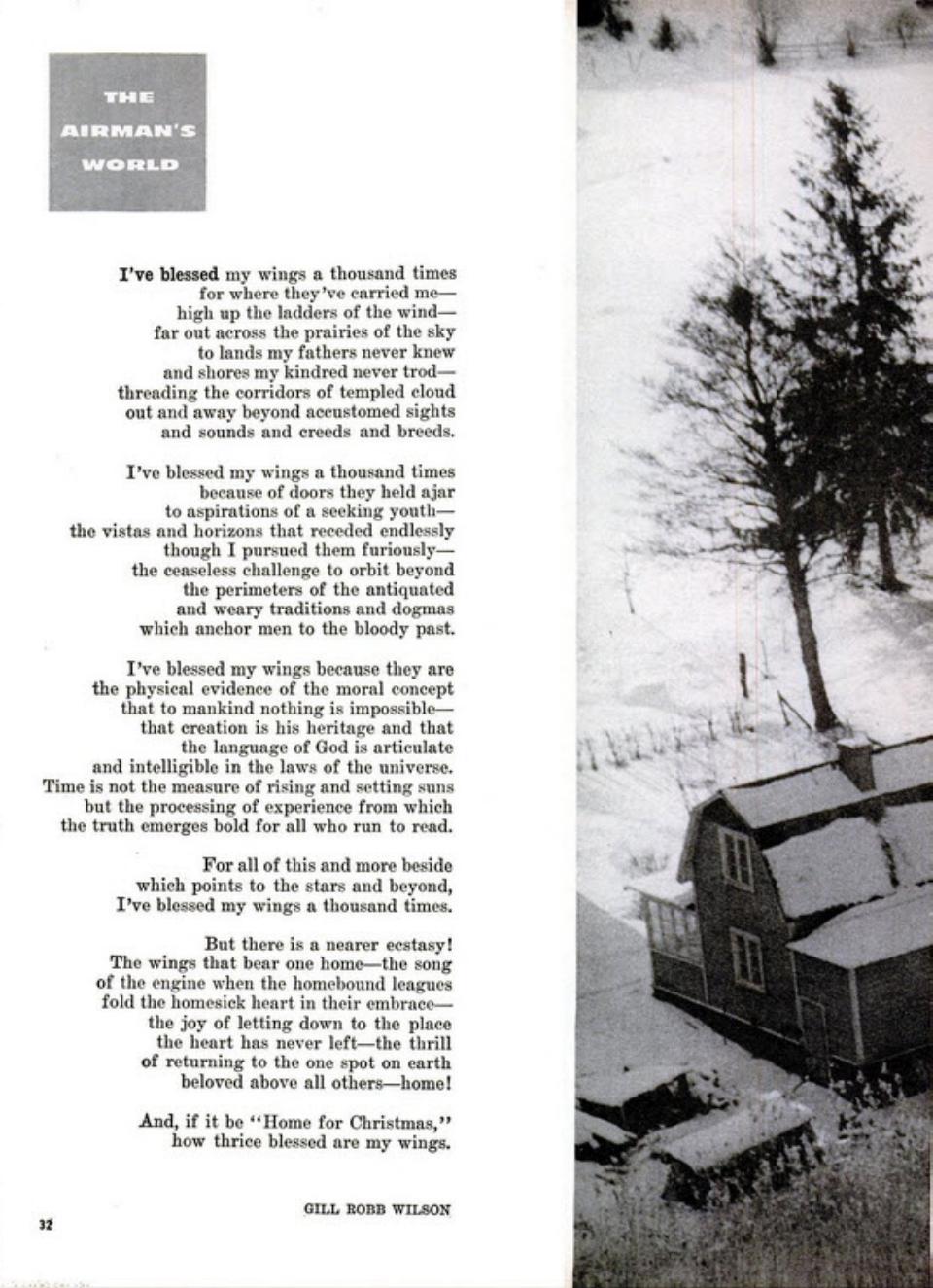
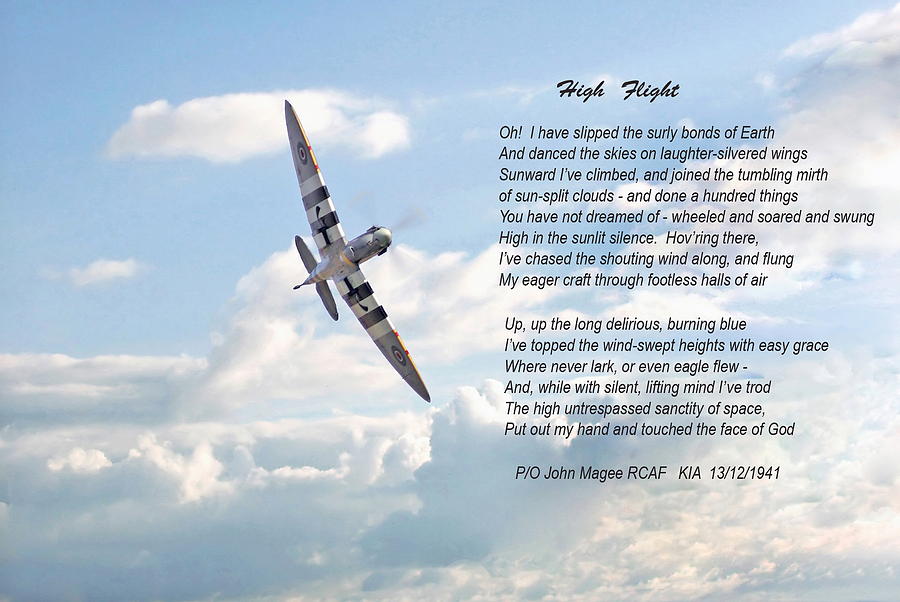
And finally...
We pray for one last landing
On the globe that gave us birth;
Let us rest our eyes on the fleecy skies
And the cool, green hills of Earth.
-- Rhysling
as recorded in "The Green Hills of Earth", by Robert Heinlein
Go to top
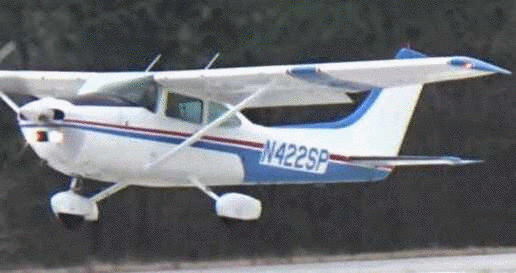


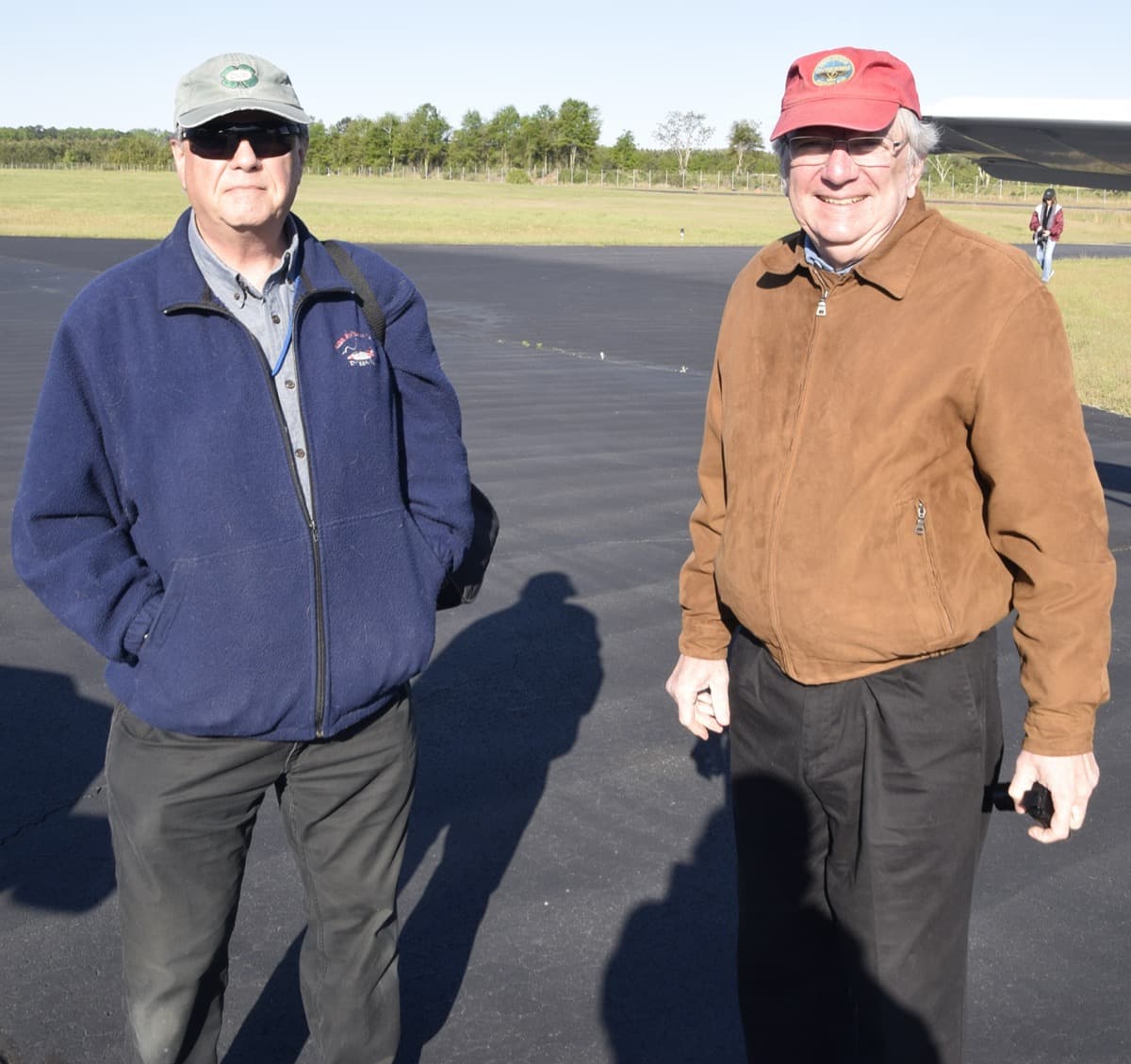







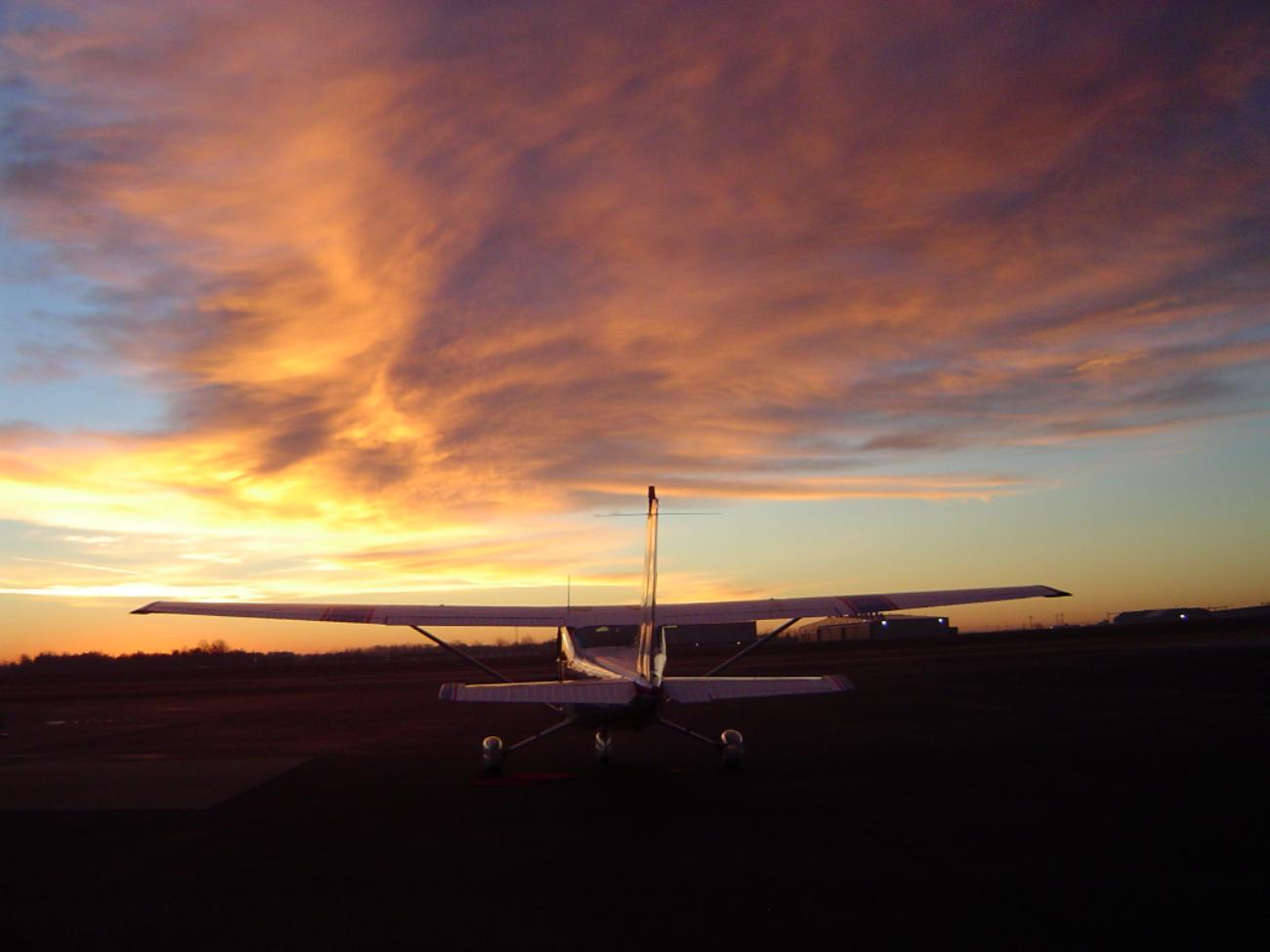

























 The Ultimate High
The Ultimate High



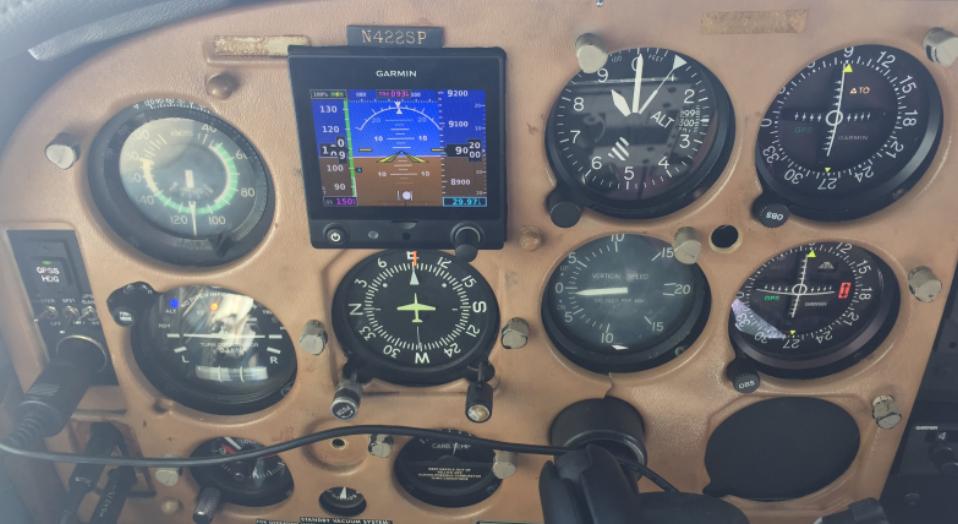

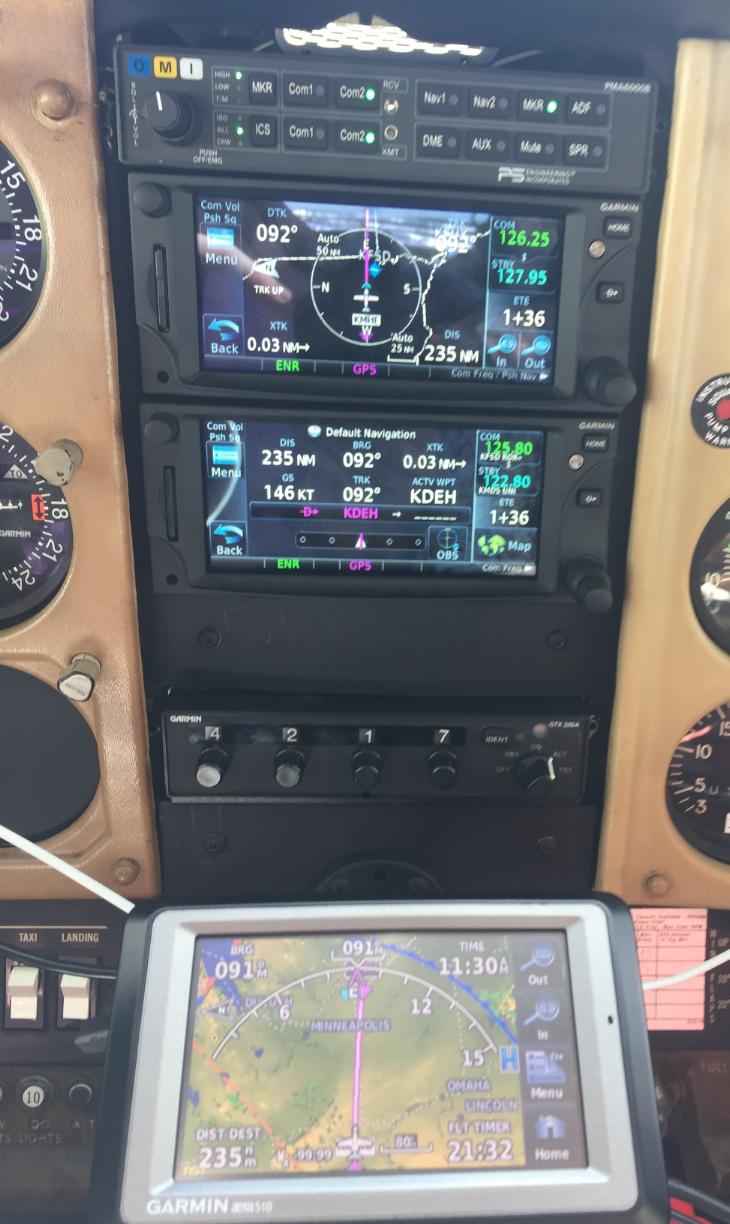















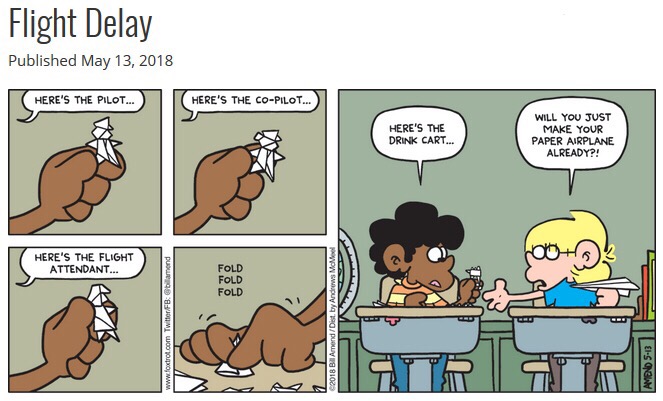
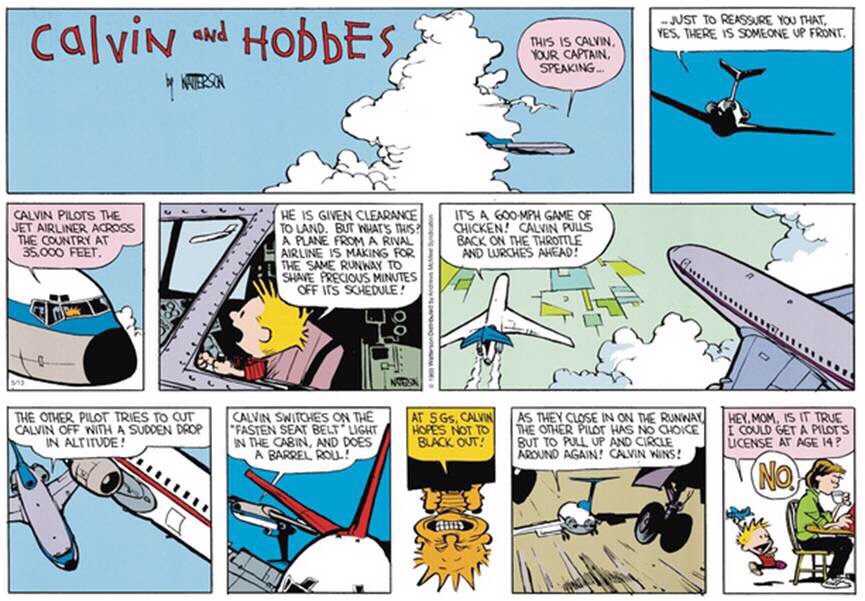




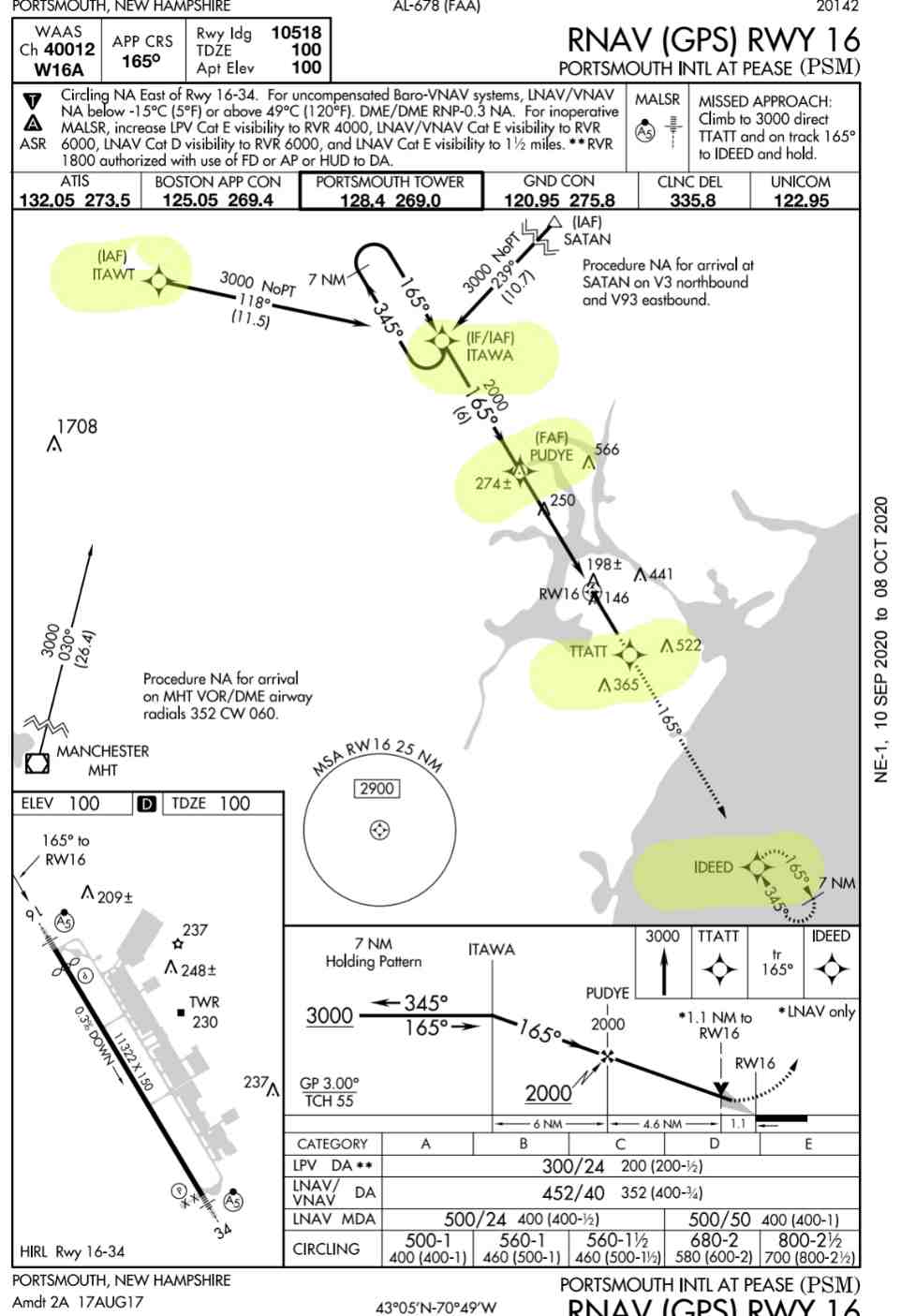

 Weekend Pilot, Frank Kingston Smith, 1957
Weekend Pilot, Frank Kingston Smith, 1957
 A Sky Of Her Own, by Molly Bernheim, 1959
A Sky Of Her Own, by Molly Bernheim, 1959
 Skyward, 1980
Skyward, 1980
 The Airman's World, by Gill Robb Wilson, 1957
The Airman's World, by Gill Robb Wilson, 1957


